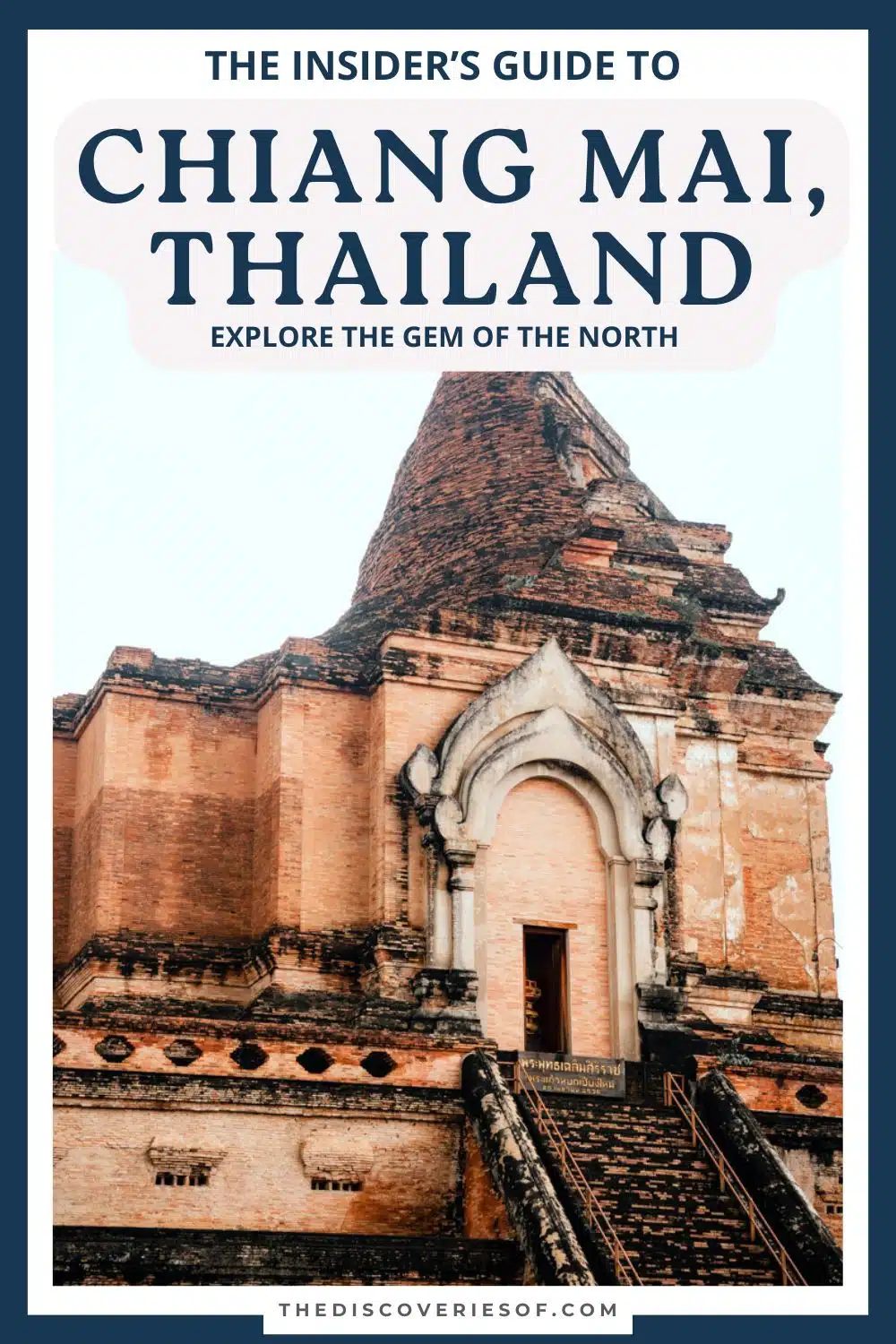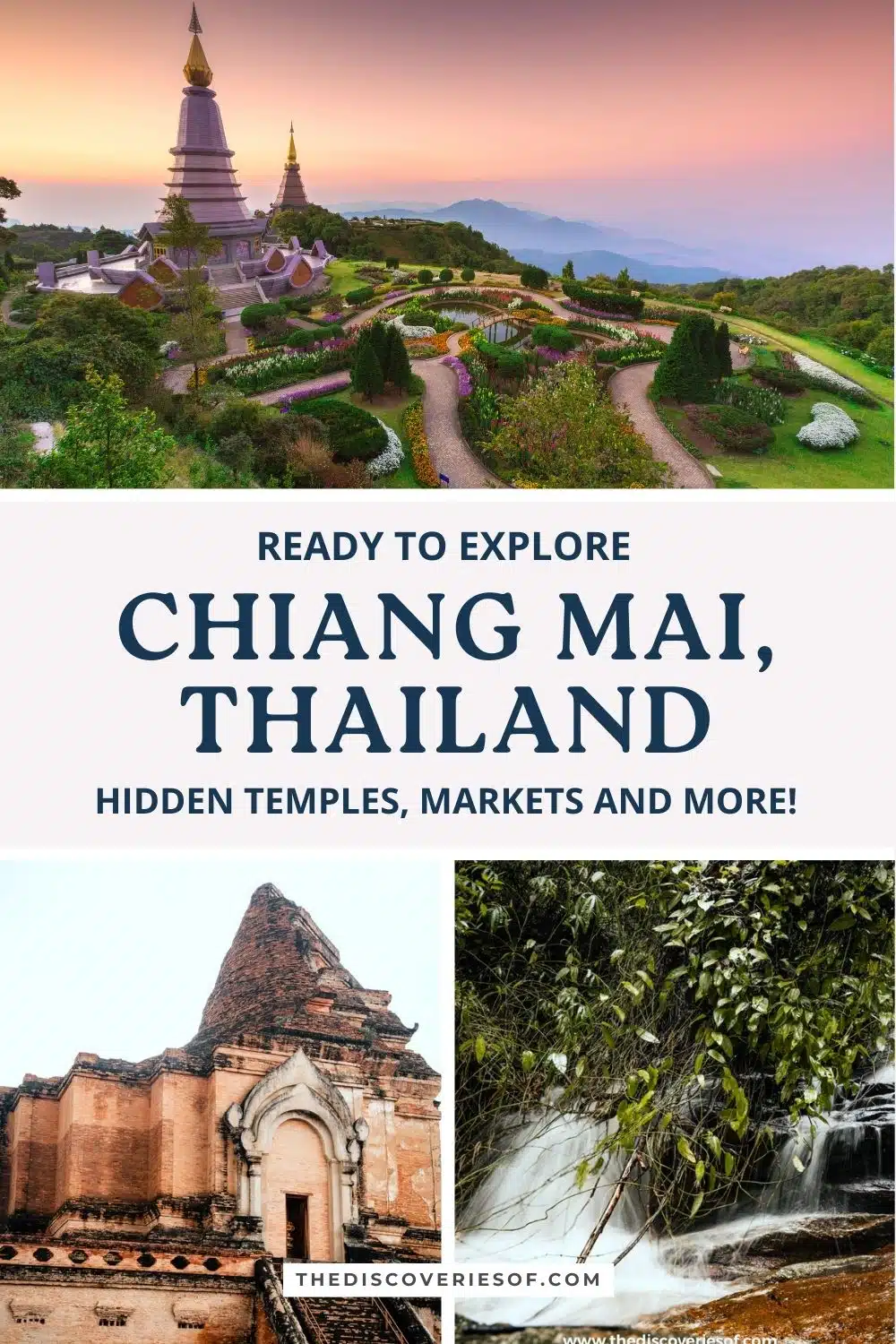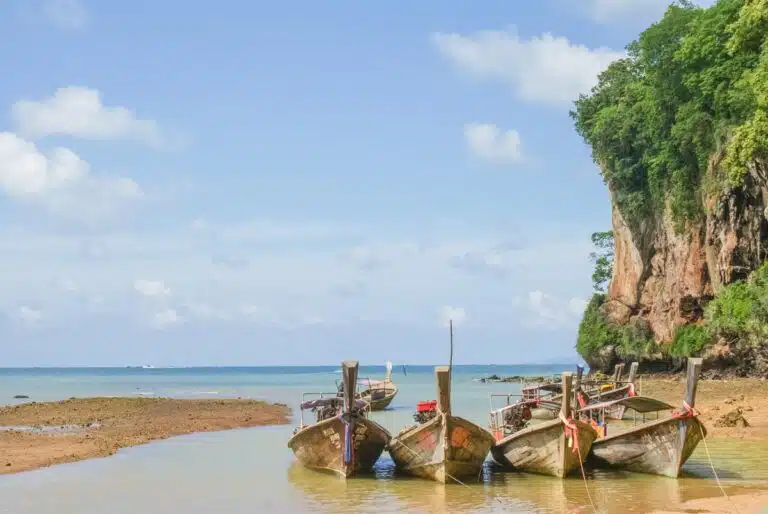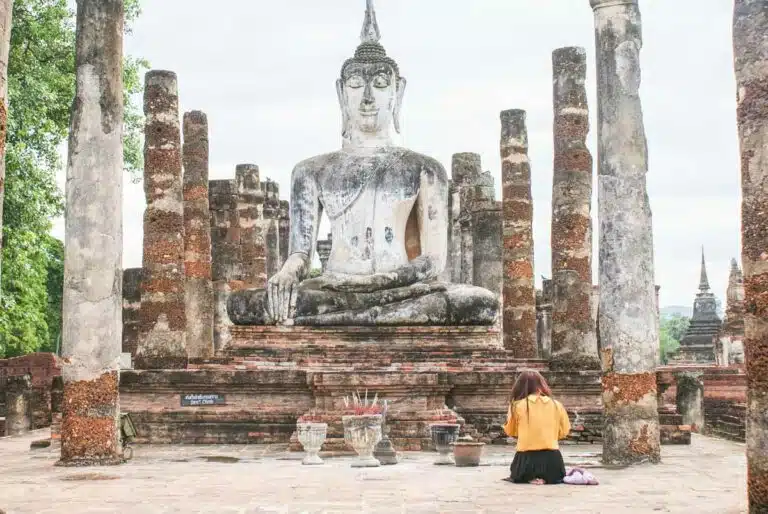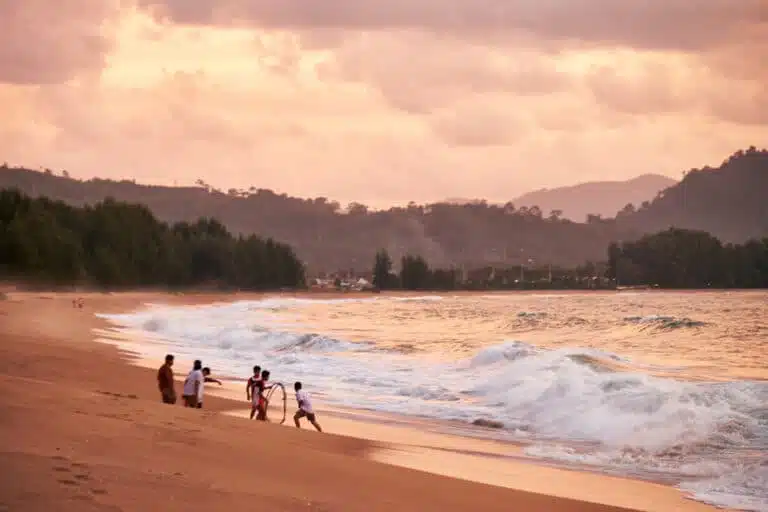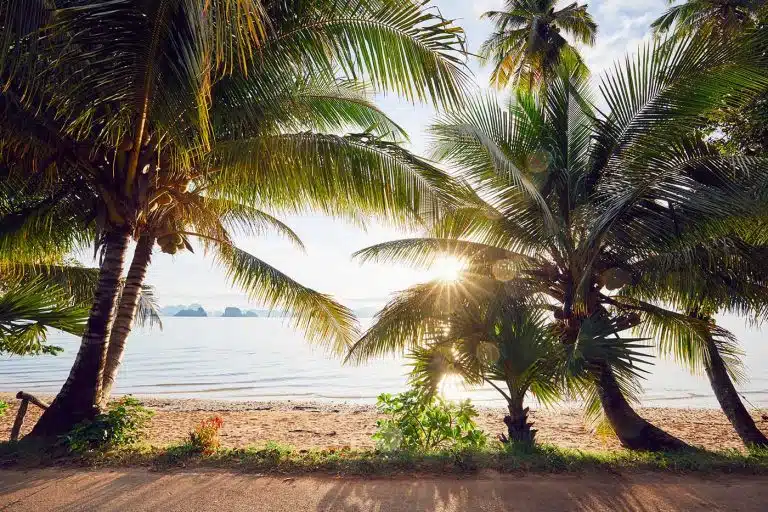Chiang Mai is one of Thailand’s most beguiling cities. With ancient temples, lively night markets and gorgeous palaces – delve into the history and culture of North Thailand’s cultural powerhouse.
There’s no place quite like Chiang Mai. Once the capital of the independent Lanna kingdom, the city was, for a time, ruled by Burma (now Myanmar) before becoming part of Thailand. The result of that tapestried history is a destination that stands apart from its more southerly counterparts.
The importance of the Lanna Kingdom can’t be understated – look carefully and you’ll find it stamped into the very fabric of the city, whether that’s the character of its people, the architecture or the food. In fact, the Lanna language still lives on in the city today, although in mostly oral form.
I’ve just come back from my fourth trip to the city – an odyssey that started 15 years ago in 2009 (I know, I can’t quite believe it either) – each trip has helped me delve just that little bit deeper into the heart of this mythical city. It’s easy to whizz through the city, see a few of the top spots and think that you’ve “seen” Chiang Mai, but take the time to explore and you’ll find a wealth of quiet gems and alternatives to the busiest places.
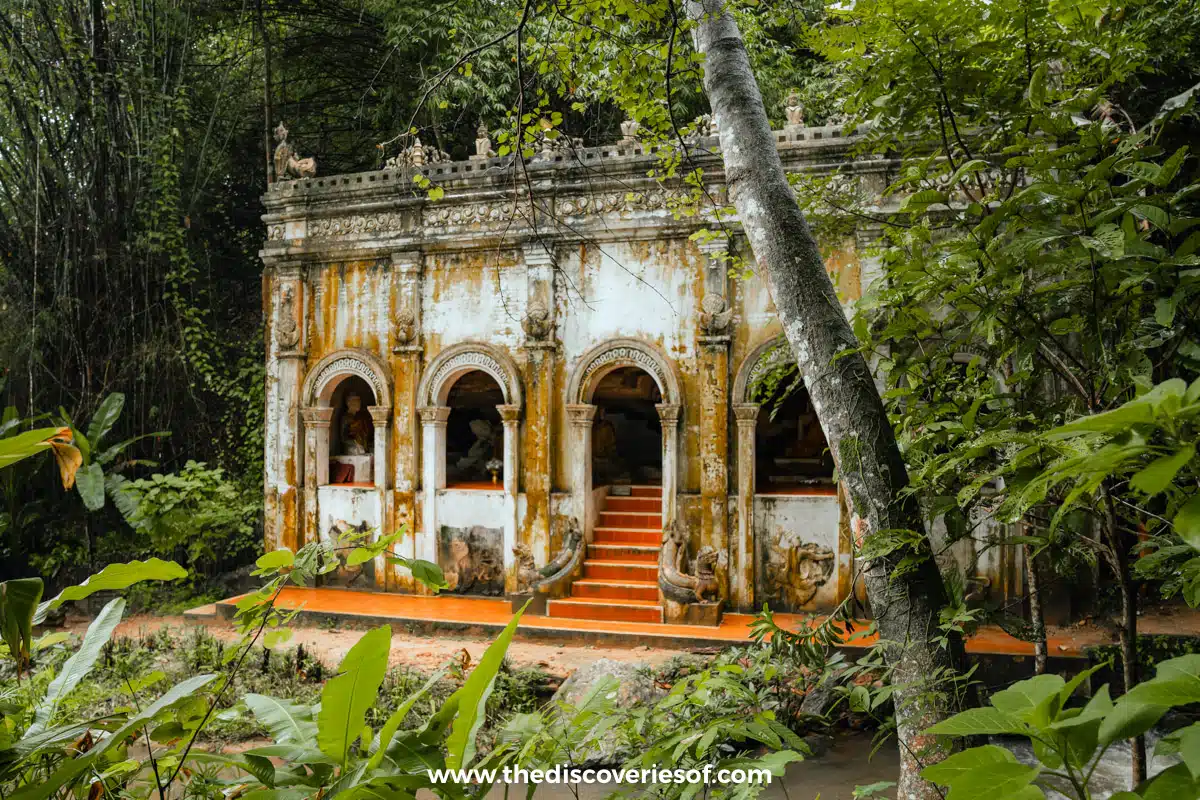
That’s where this guide comes in – together, we’re going to see some of Chiang Mai’s highlights, but really dive beneath the surface to the places that make this ancient city tick.
Are you ready to explore the best things in Chiang Mai? From jaunts around hidden temples to a cooking class in a semi-rural farm, these are the things you shouldn’t miss.
Unmissable Things to do in Chiang Mai
Visit Doi Suthep National Park and Wat Phra That Doi Suthep
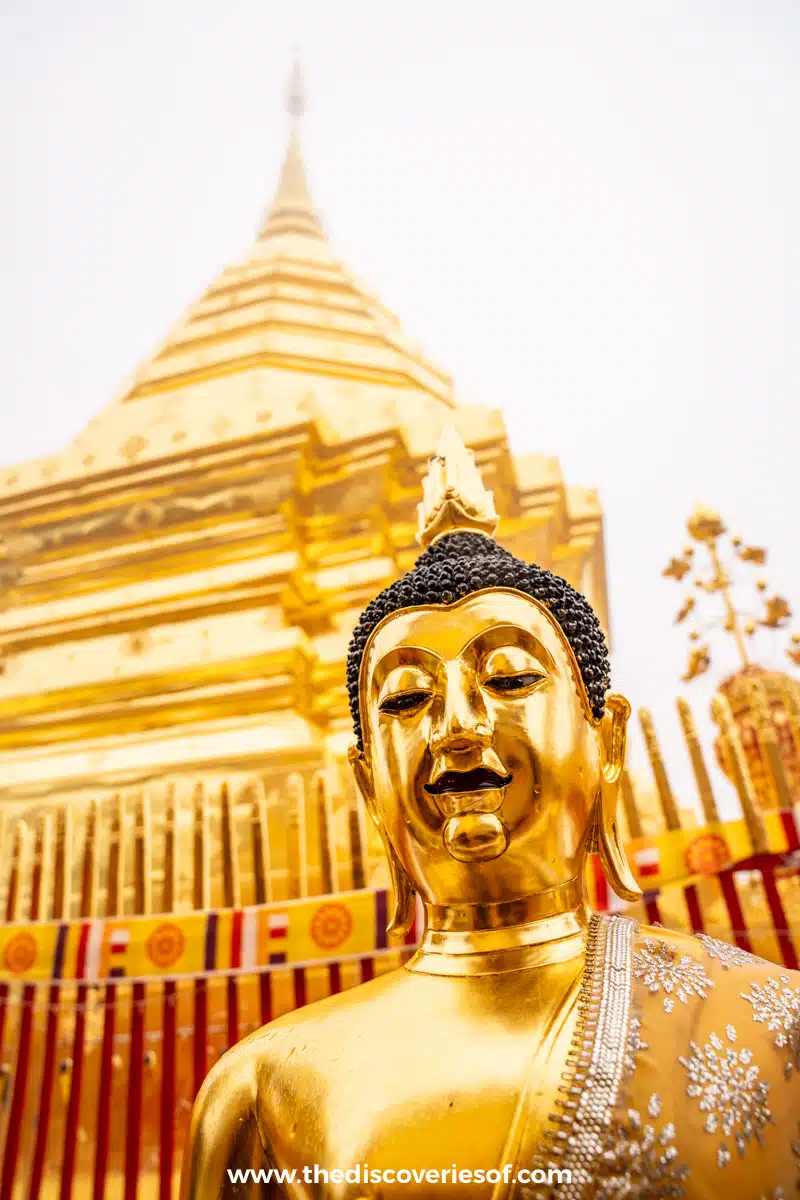
Climbing to just below two thousand metres, Doi Suthep and Doi Pui form the twin peaks of a granite mountain along the western edge of Chiang Mai. Covered in thick, deciduous forests, cascading waterfalls and winding mud paths, Doi Suthep is dominated by the Wat Phra That Doi Suthep temple.
While Chiang Mai is dotted with hundreds of temples, the Wat Phra That Doi Suthep Buddhist temple is one of the best-known places of worship in the city.
It’s a sacred site to many Thai people along with being tied to ancient legends. Positioned at the front of the temple sits the White Elephant shrine.
The relevance of the elephant links to the story of the monk named Sumanathera who found Gautama Buddha’s shoulder bone and gave it to the king, the king placed part of the relic on the back of a white elephant who climbed to the top of Doi Suthep, trumpeted three times, and then collapsed, and in doing so, marked the place as worthy of housing the holiest of temples.
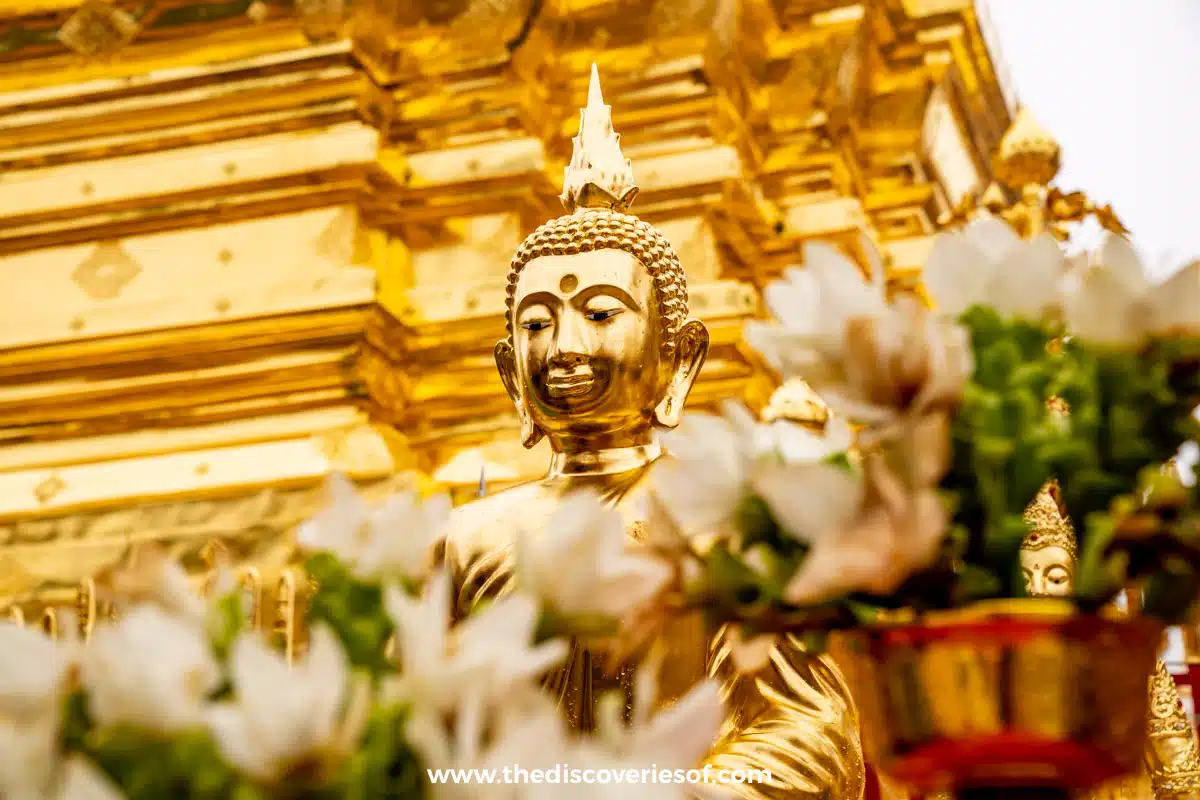
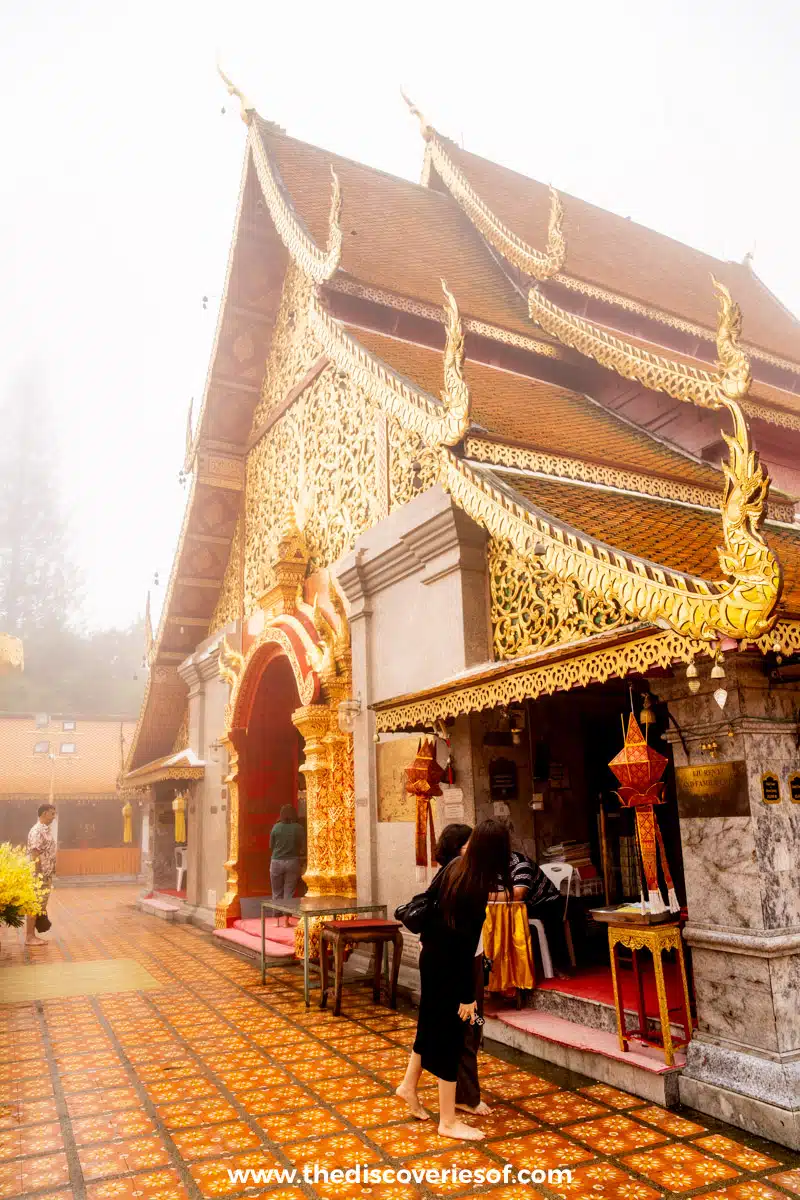
As with every visitor, my journey to the temple began with a choice: either take the 300-step staircase, lined with intricately carved Naga serpent sculptures, or opt for the cable car for a more leisurely ascent.
Once I reached the top, I found myself immersed in a landscape of golden statues, bells, and lush greenery, with the gilded chedi (stupa) at the heart of the temple complex.
Covered in gold leaf, the chedi glows under the sun – and it’s said to contain relics of the Buddha himself. Don’t miss the chance to walk around it clockwise, ringing the bells for good luck as you take in the serene beauty.
Top Tip
The temple’s terrace has great views of Chiang Mai sprawled below – and at dawn or dusk, the views are nothing short of magical. I’d recommend going early in the morning to catch the sunrise, when the crowds are thinner.
Take a Cooking Class at The Best Thai Cooking Course
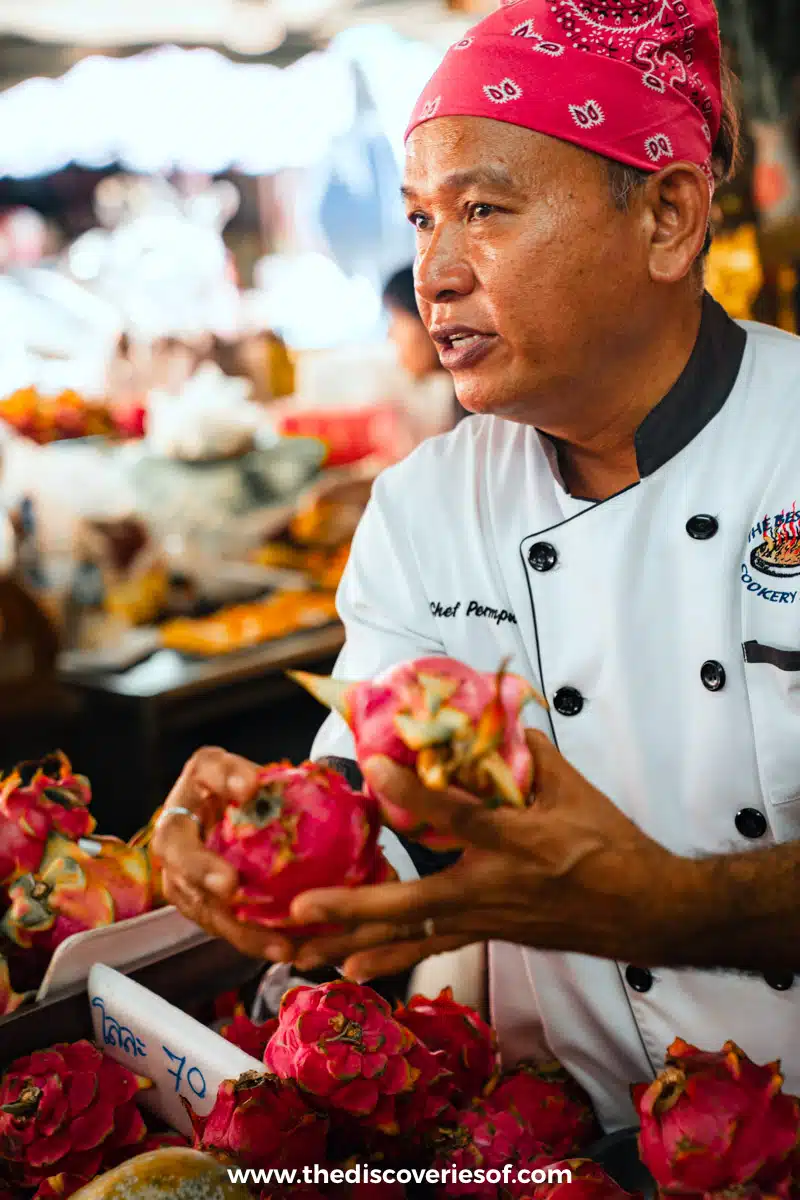
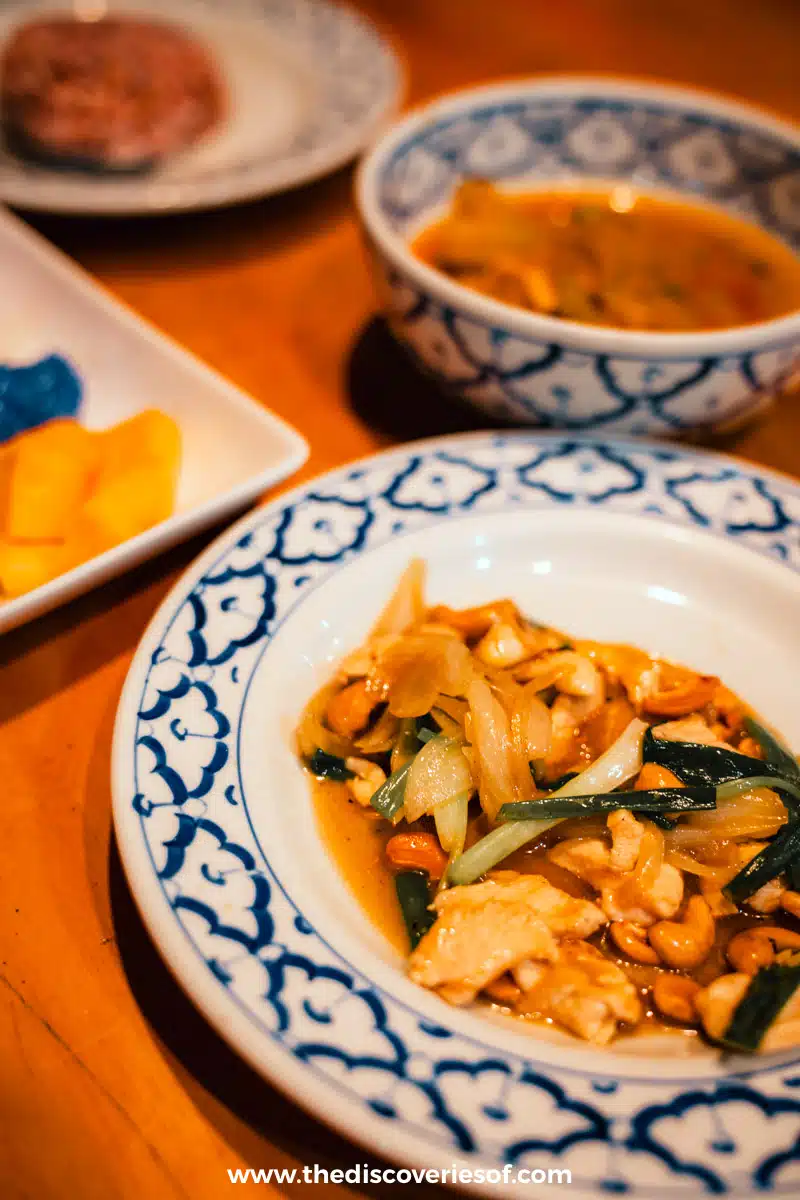
Northern Thai cuisine is a world of its own, distinct from the flavours found further south in Thailand. Rich with earthy, aromatic herbs, it reflects the region’s unique cultural heritage.
It’s easy to just eat your way around a country trying this and trying that, but nothing helps you understand the foundations of a region’s cuisine like doing a cooking class.
In other words… there was basically a near-zero percent chance that I wasn’t going to book a cookery class on this trip – and I found just what I was looking for at The Best Thai Cooking Course.
The school offers a perfect blend of hands-on learning and cultural discovery. We kicked off our session with a visit to a local market, where the chef guides you through the stalls of colourful vegetables and essential Thai ingredients like lemongrass, galangal and kaffir lime leaves.
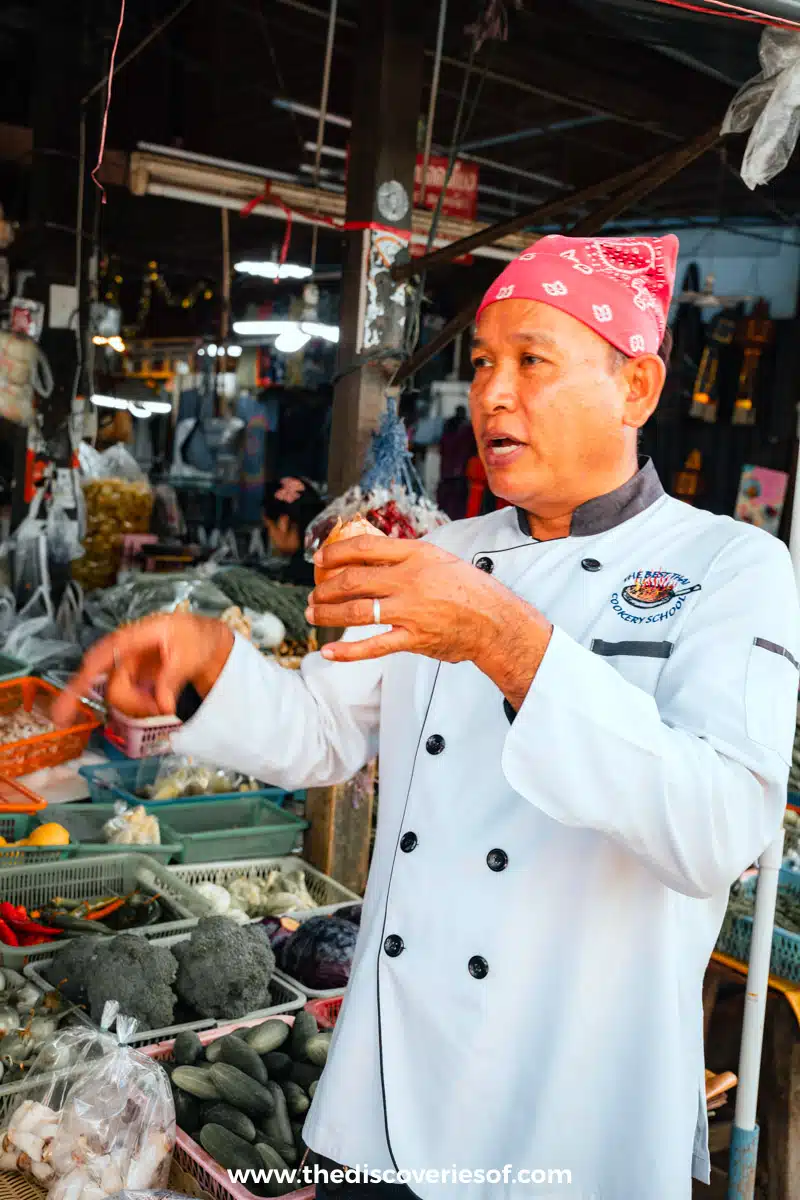
That’s not all though – after we finished up at the market, we headed back to the cookery school to harvest some ingredients directly from their own gardens. The farm-to-table was a nice touch – allowing us to cook with the freshest ingredients while learning about the importance of sustainability and local farming in Thai culinary traditions.
With a sense of humour and an infectious enthusiasm for Northern Thai cuisine, the chef makes the experience fun, engaging, and approachable—even if it’s your first time handling a wok.
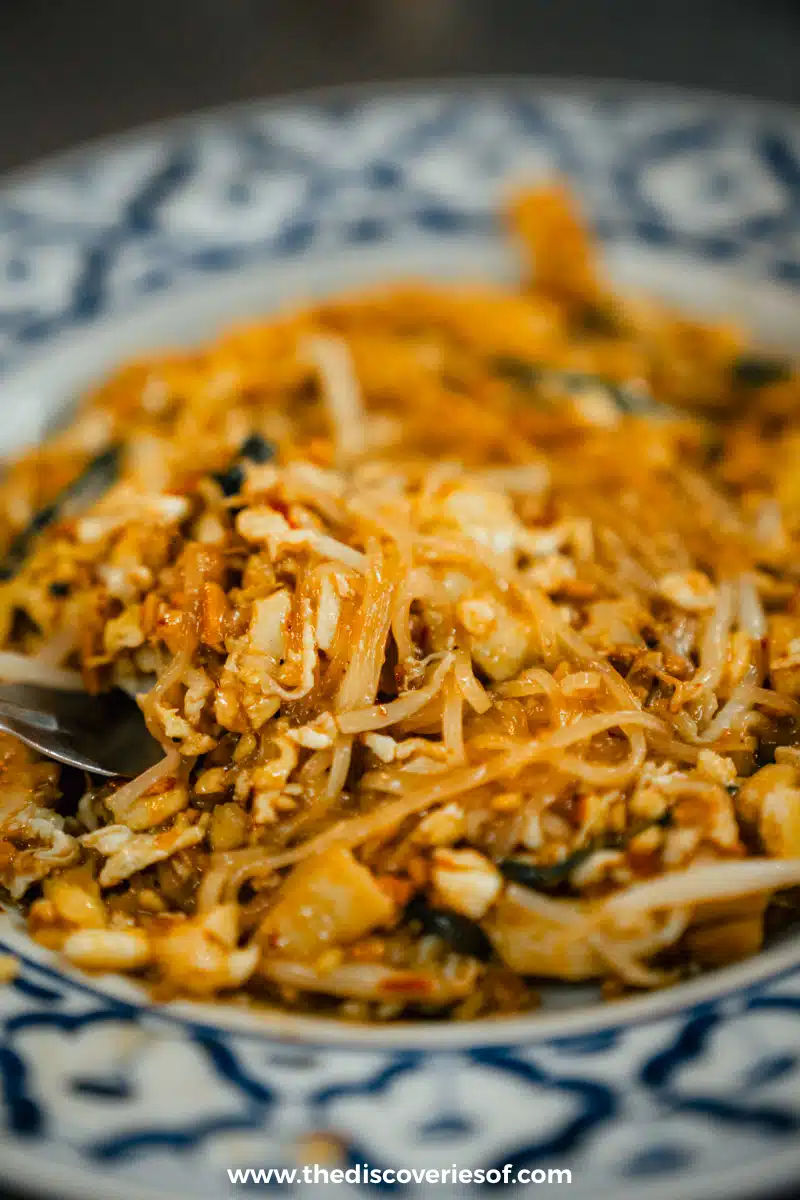
And what about the final result? Predictably wonderful – we made a chicken and cashew stir fry, blending fresh vegetables and crunchy nuts with tender, juicy chicken for the perfect balance of savoury and sweet (and learnt some crazy wok skills in the process). We also tried our hands at red curry or pad Thai, learning the nuances of Thai spices and the art of balancing sweet, sour, salty and spicy flavours.
One of the best parts of this class is that I really felt like I was building skills to bring Northern Thai cuisine into my own kitchen and impress friends and family with my new-found expertise.
Explore the Wat Phra Singh Temple Complex
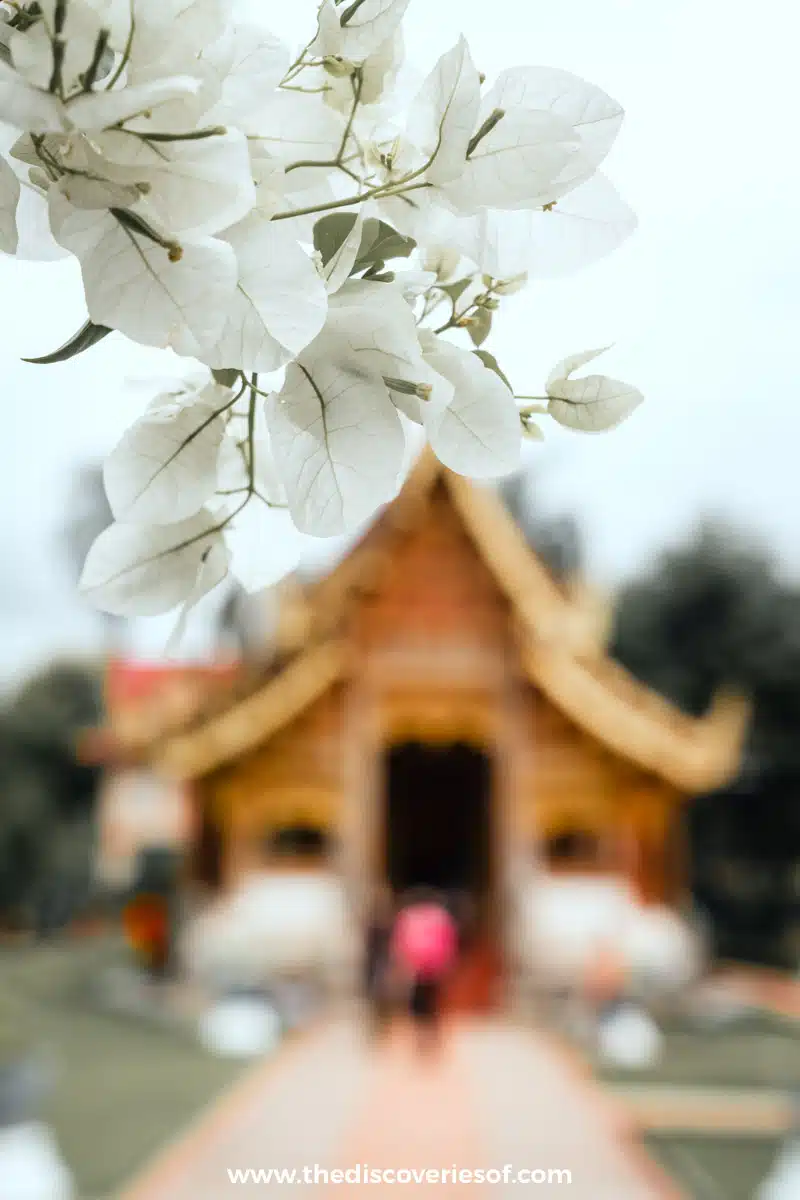
Nestled in the heart of Chiang Mai’s Old City, Wat Phra Singh is one of the city’s most cherished temples and a masterpiece of classic Lanna architecture. Personally, the Wat Phra Singh temple complex is one of my favourite spots in Thailand, full stop.
Dating back to the 14th century, this temple complex is an essential visit for anyone interested in the rich history, art, and spirituality of northern Thailand.
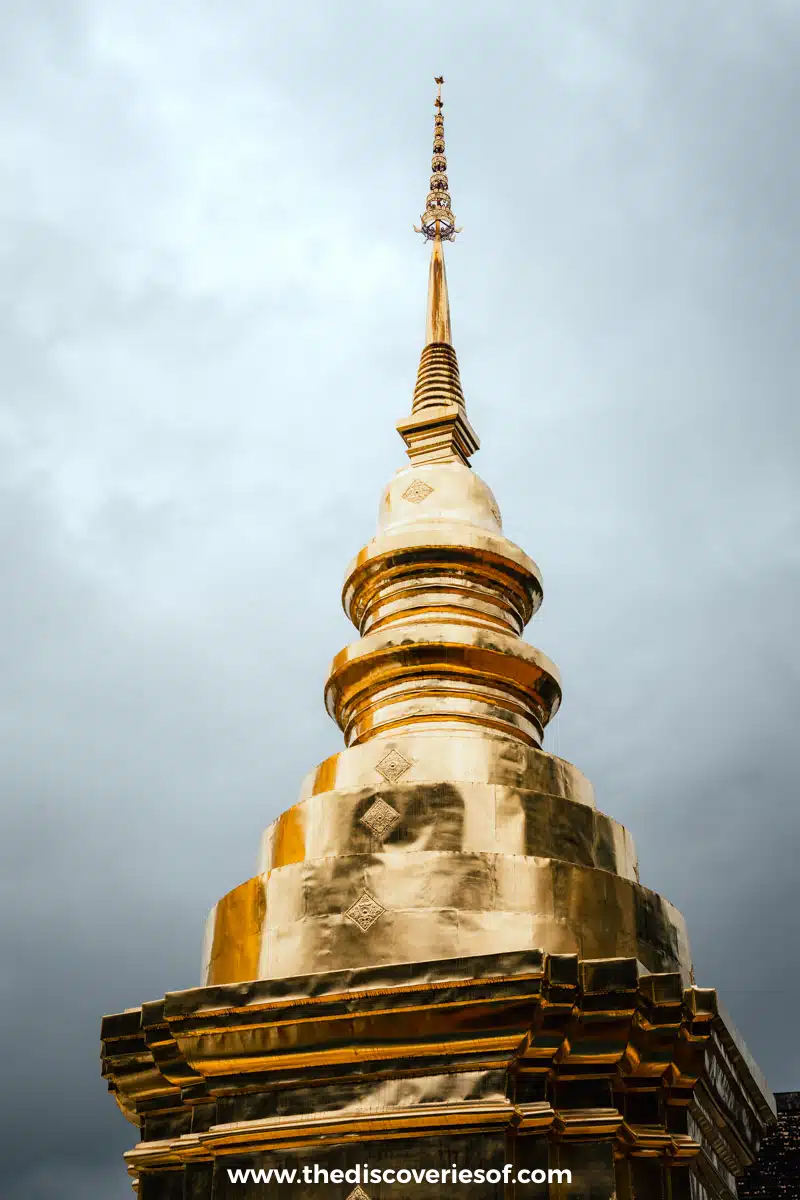
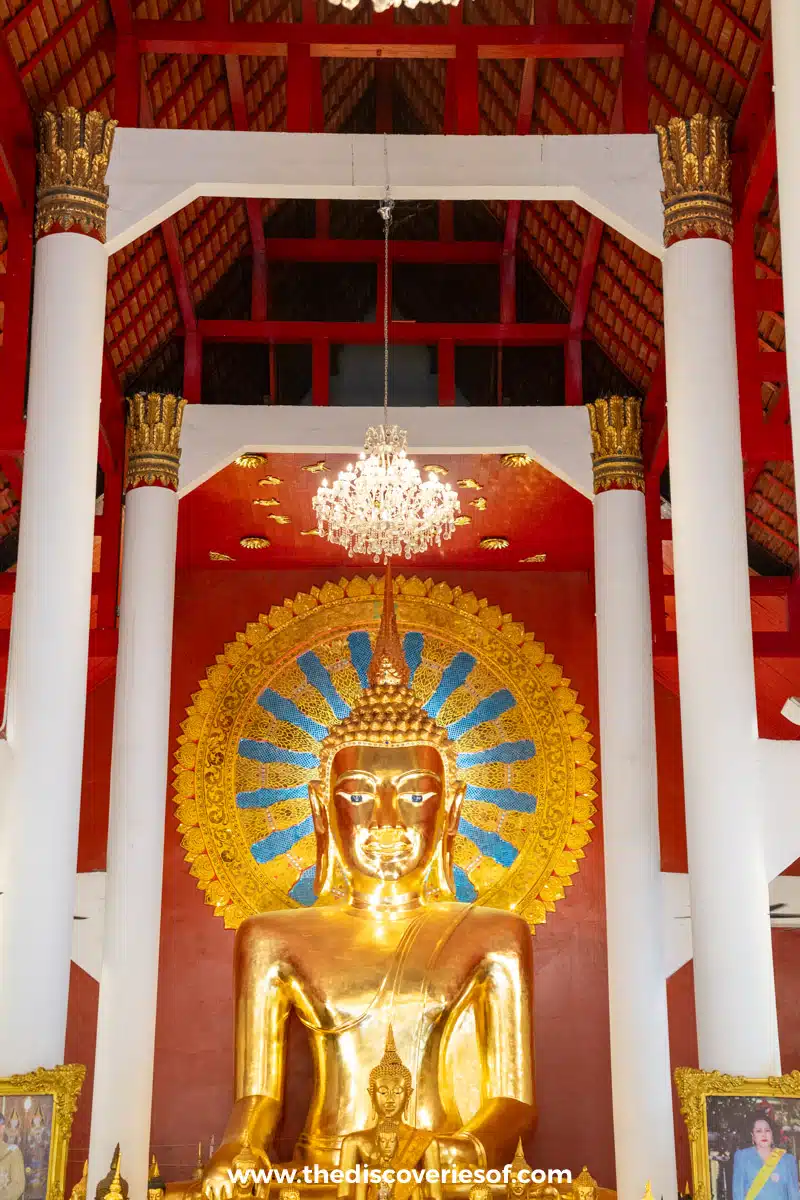
The temple’s central assembly hall, Viharn Luang, features a stunning wooden facade adorned with exquisite carvings and murals that depict stories of the Buddha’s past lives, offering a glimpse into the storytelling tradition of ancient Thai Buddhism.
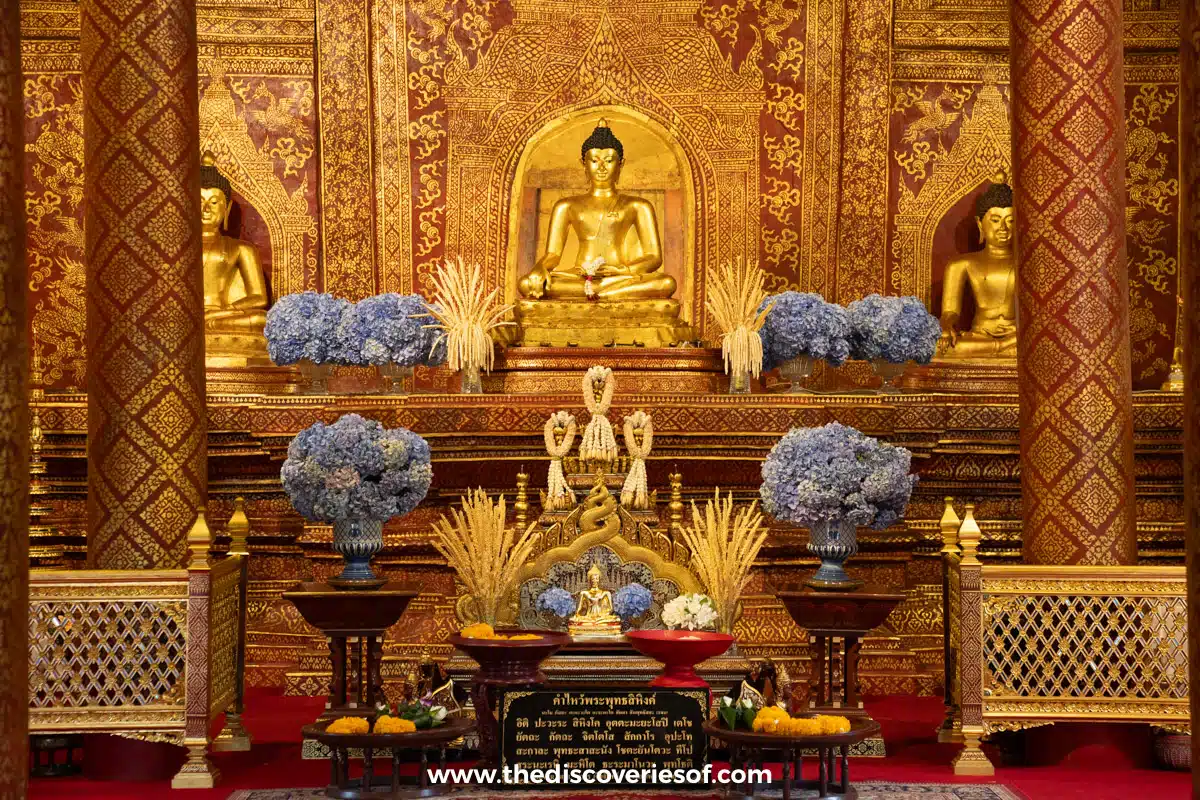
The temple’s most prized possession is the Phra Buddha Sihing statue, or “Phra Singh,” a revered Buddha image that sits in the smaller Wihan Lai Kham, an elegant, gold-covered chapel. This image, crafted in the graceful Sukhothai style, is one of Thailand’s most sacred Buddha statues.
Don’t miss the Ubosot (ordination hall), where you’ll find another striking Buddha image and more intricate murals.
Top Tip
The Lanna architecture unique to Northern Thailand makes extensive use of wood, especially teak, with intricate carvings depicting Buddhist stories. It features layered roofs resembling steps and buildings decorated with Nāga (snake) and Garuda (mythical bird) motifs, as well as elaborate gold detailing.
See the Old City Walls
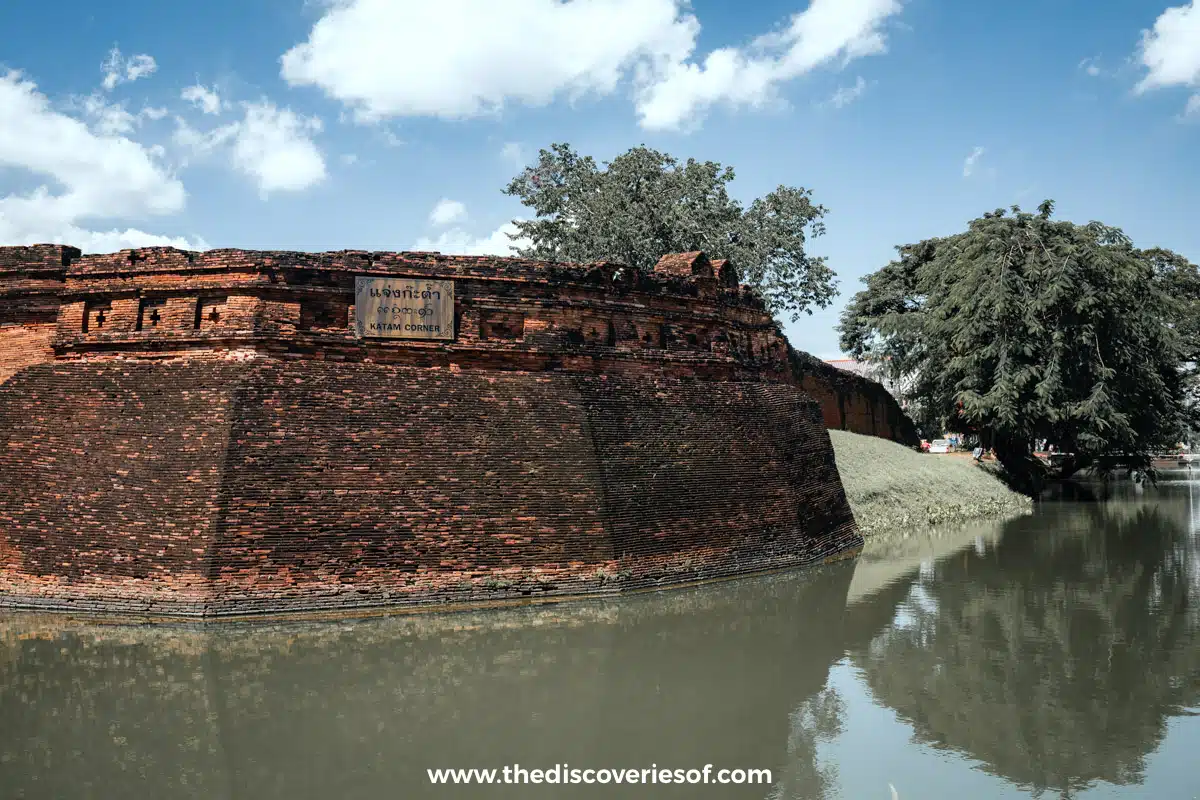
Exploring Chiang Mai’s Old City walls and gates feels like stepping back in time. Built over 700 years ago to protect the city from invasion, these walls are a powerful reminder of Chiang Mai’s storied past as the capital of the Lanna Kingdom.
Strolling along the ancient brick walls, you pass through historic gates like Tha Phae, the city’s main entrance. The moat that still encircles the Old City winds its way along the wall – in fact, walking here, it’s easy to imagine the city as it once was — a centre of trade, culture, and vibrant tradition.
Delve into History at Wat Chedi Luang
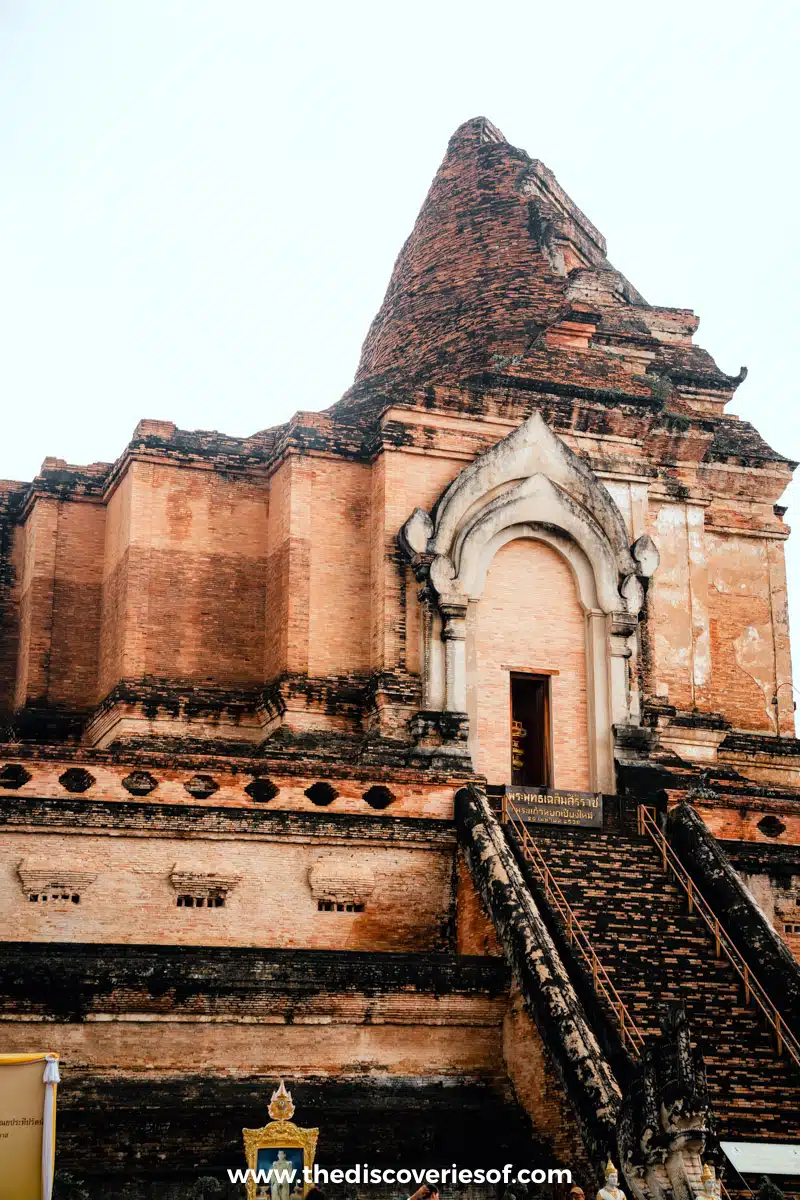
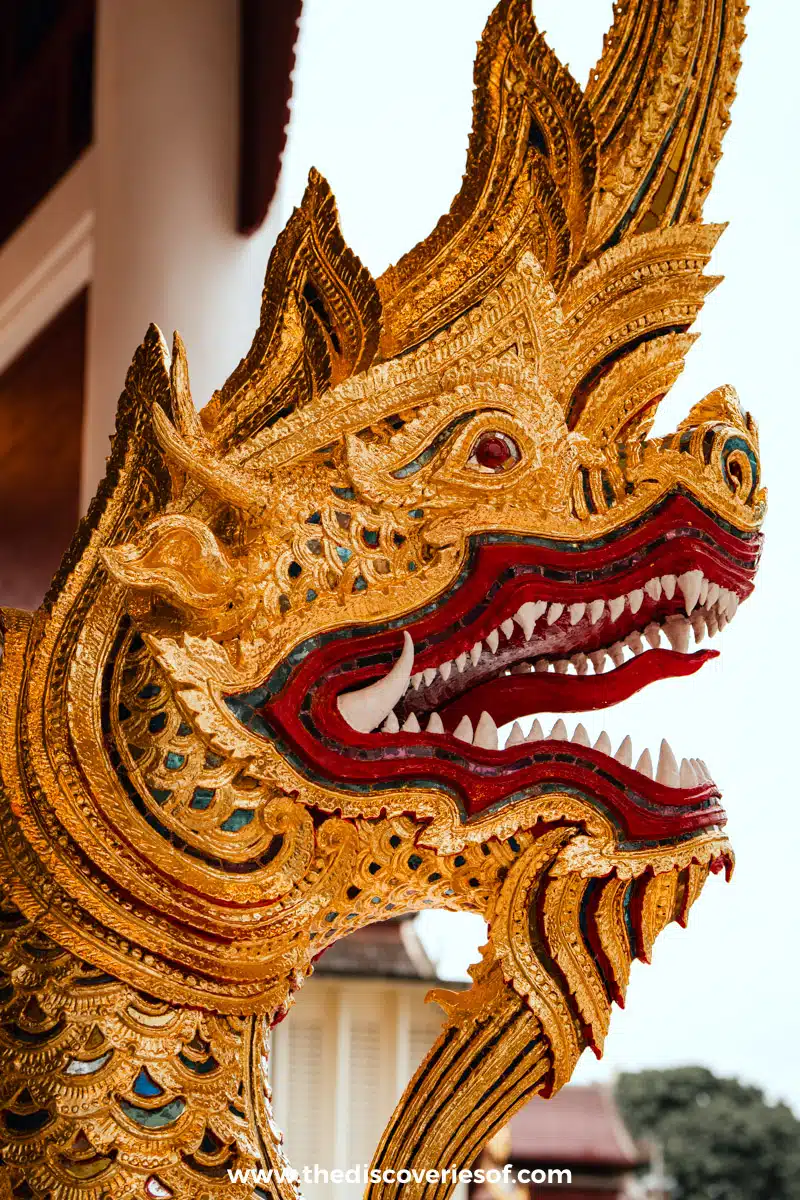
Other than the Wat Phra That Doi Suthep temple, Chiang Mai is also home to the Wat Phra Singh, Wat Umong, Wat Suan Dong, and Wat Chiang Man temple just to name a few.
While I hope I’ve already convinced you that many of these sacred sites warrant a trip, there’s no denying that Wat Chedi Luang is one of the most majestic temples in Chiang Mai.
Known for its towering, crumbled chedi (destroyed by either an earthquake back in the sixteenth century or cannon fire during the eighteenth century – no one can quite agree which), the temple complex is now a mismatch of the original fourteenth-century Lanna design and the 1990’s renovation work.
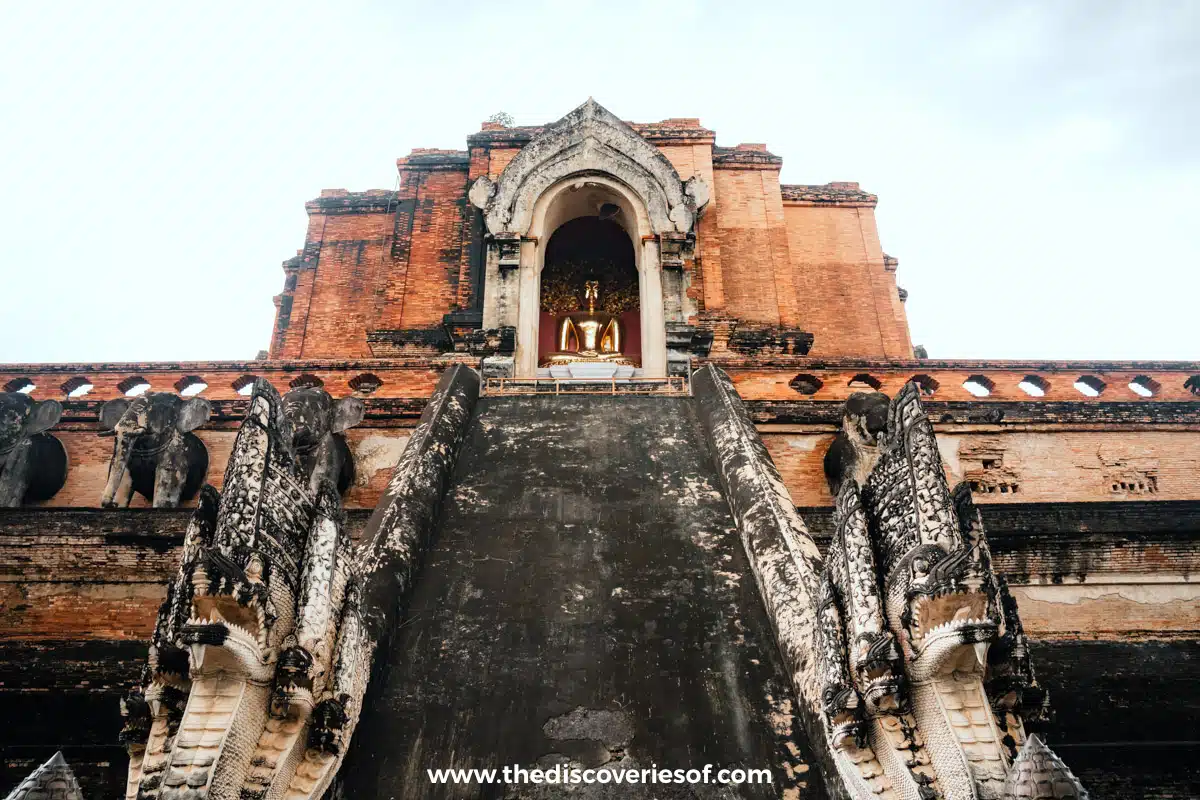
Wat Chedi Luang is surrounded by elephant sculptures, tall pillars, chapels and shrines. In the eastern section of the temple sits the Phra Phut Chaloem Sirirat black jade replica of the emerald buddha (now housed in Luang Prabang.)
Another thing to do in Chiang Mai in the Wat Chedi Luang is talk with the monks that sit in the shade of trees offering advice or simply conversation.
Read Next
Read this guide to things to do in Thailand to help you plan your next adventure.
Try Some of the City’s Best Restaurants
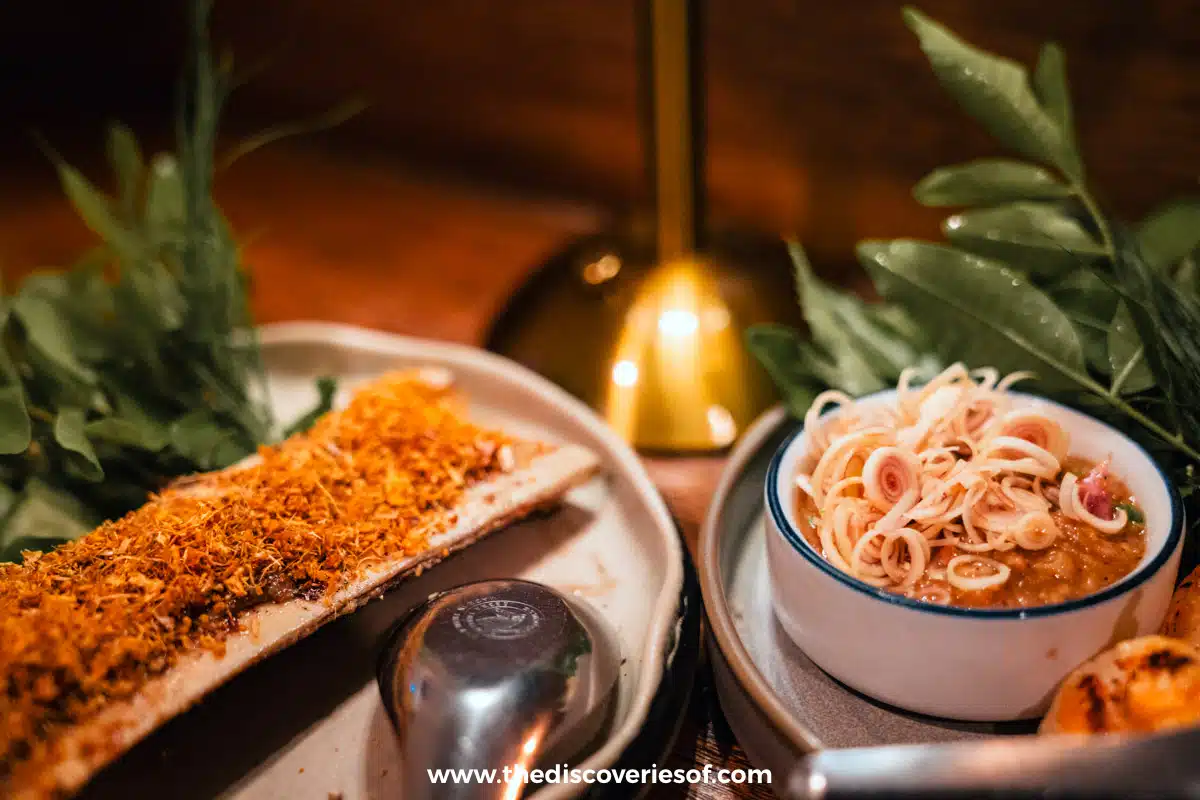
Dining in Chiang Mai is always going to be a highlight of any trip. Look, I’ll level with you – you can feast from street food stalls, pretty much dine in any local restaurant and you’re going to come out winning, but there are a couple of places I’d really recommend trying if you have time: namely Huen Muan Jai, and Rasik Local Kitchen and Kuay Jub Chang Moi.
Each of these three offers a unique taste of Northern Thai cuisine with its own personality.
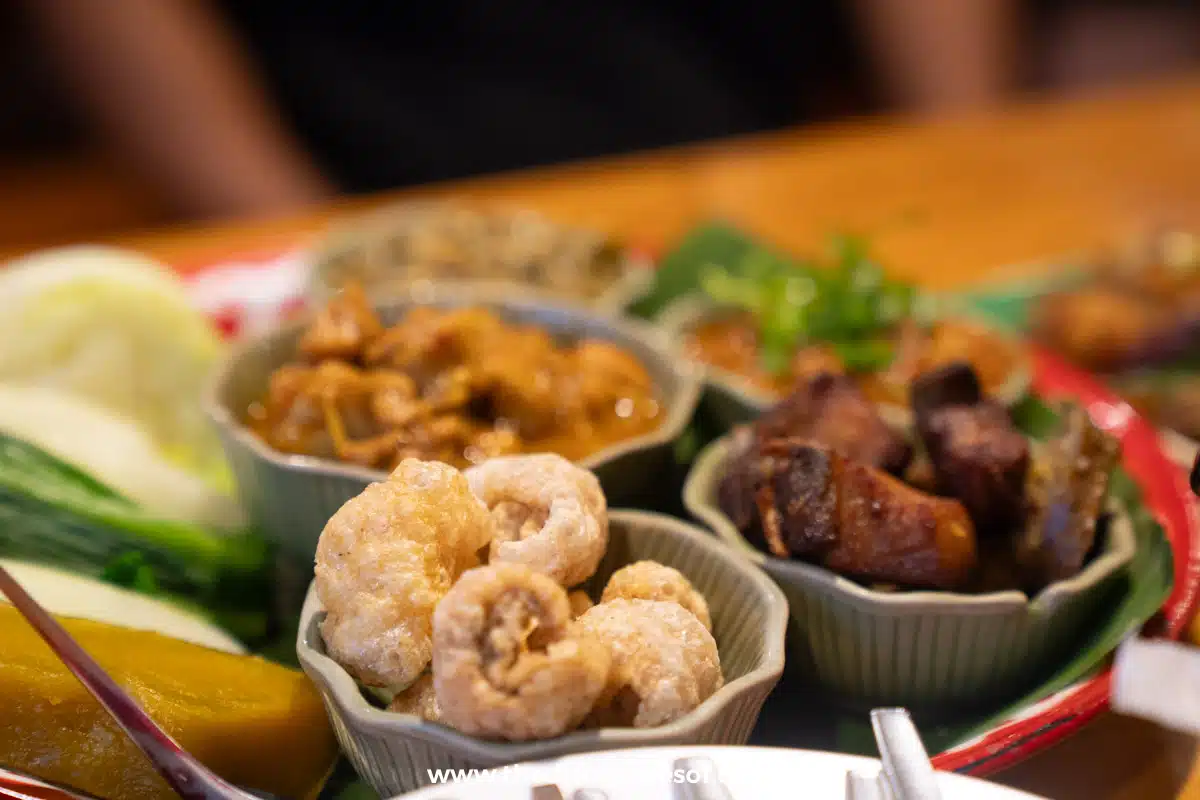
Huen Muan Jai truly captures the essence of home-style Northern Thai cooking. Locals pack this unassuming spot, and for good reason: the *sai ua* (Northern sausage) and *nam prik noom* (green chilli dip) brought bold, authentic flavours.
Then there was Rasik Local Kitchen, a quieter spot tucked away in the city. They’re not joking when they say to book this spot ahead – it’s very small and I was lucky enough to grab a spot at the small bar because I was dining solo. Like the other two spots I’ve featured in this section, Rasik specialises in Northern Thai dishes – but with a modern twist.
I am going to be quite clear – the grilled bone marrow with galangal chilli paste was straight up incredible – as was the shrimp paste relish with grilled shrimp and condiments. Just go – you’ll thank me for it.
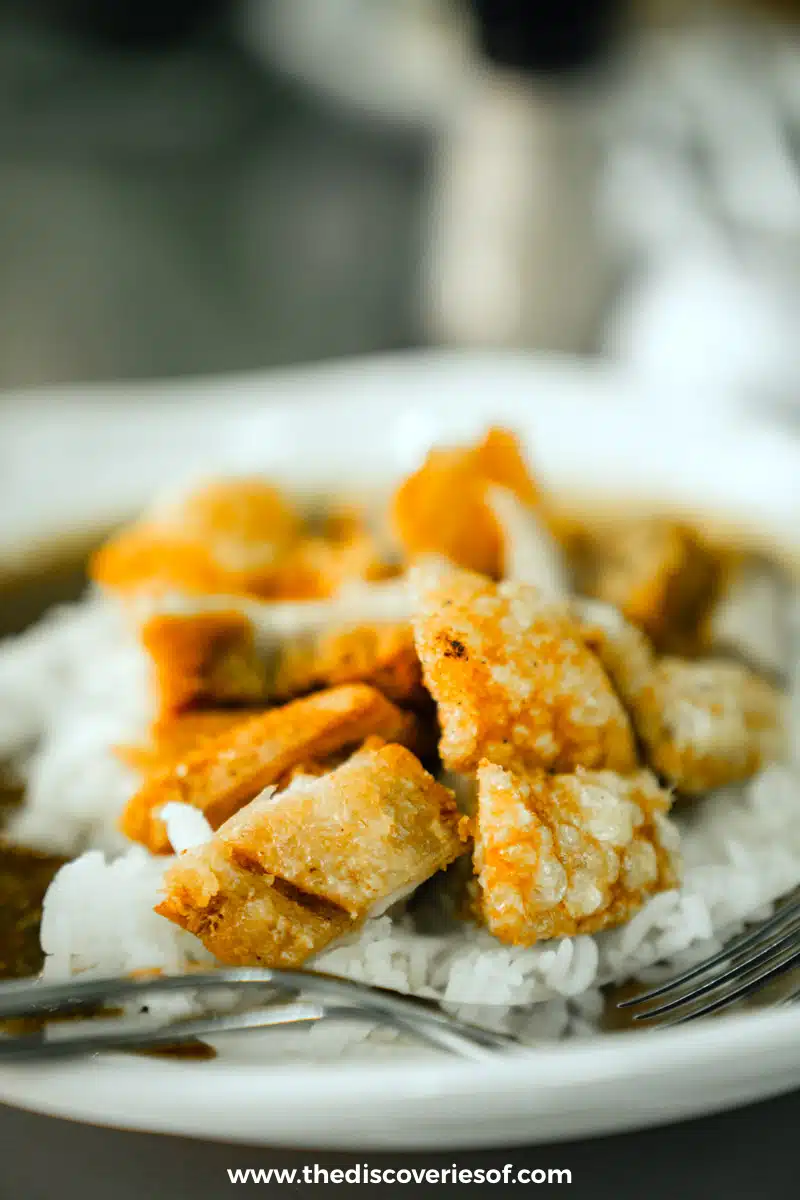
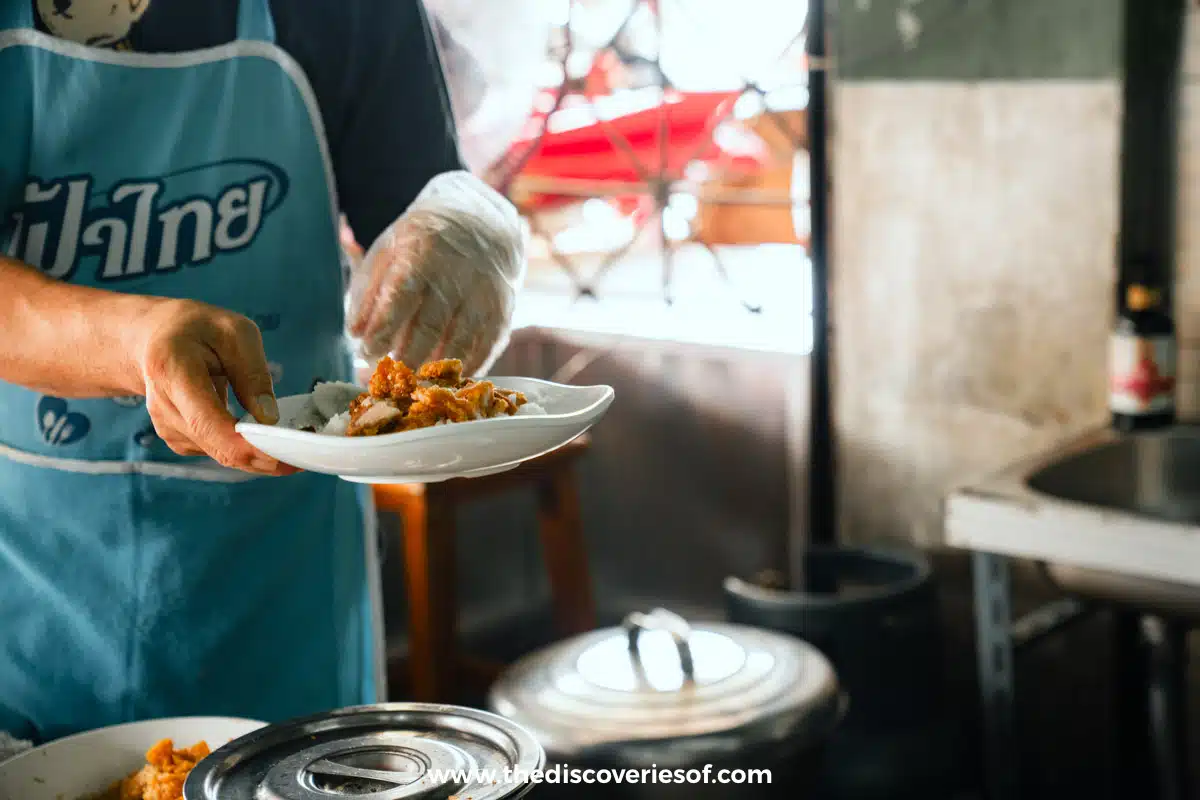
For a truly local experience, head to Kuay Jub Chang Moi. This beloved noodle shop, unassuming yet packed with charm, is famous for its kuay jub, a comforting bowl of rolled rice noodle soup known for its rich, peppery broth. Located near Chang Moi, it’s a popular spot with locals—and the line out front (and its feature in the Michelin guide) speaks volumes about its reputation.
The classic bowl comes filled with tender slices of pork belly, crispy fried garlic and an array of flavourful herbs. But I’d also recommend the crispy grilled pork with sauce and rice with a lemongrass juice to wash it down with because – wow. It’s comfort food at its finest.
Explore The City’s Night Markets
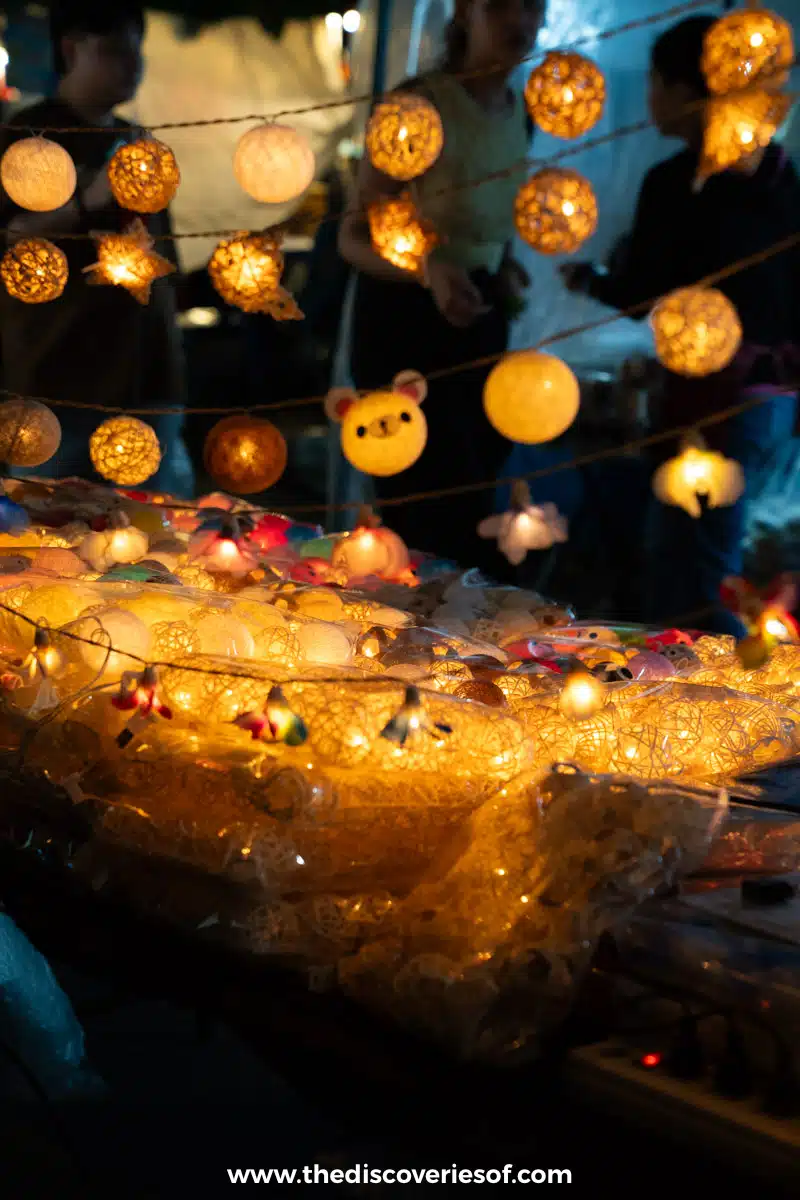
There’s no better way to spend an evening in Chiang Mai than heading out to the night bazaar. The markets, especially the famous Sunday Walking Street and Night Bazaar, offered an eclectic mix of artisanal crafts, textiles, and tempting street food.
The Sunday Walking Street features stalls packed with handmade jewellery, intricate wood carvings, and beautiful scarves woven by local artisans.
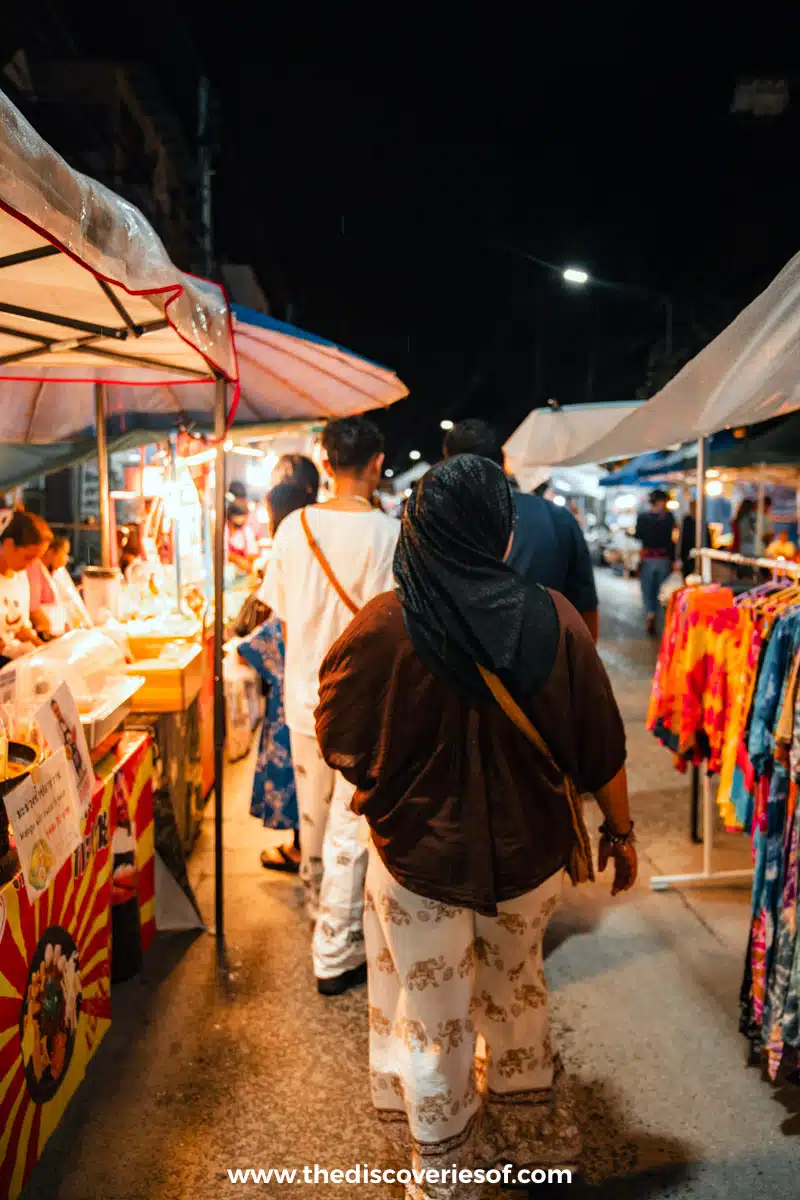
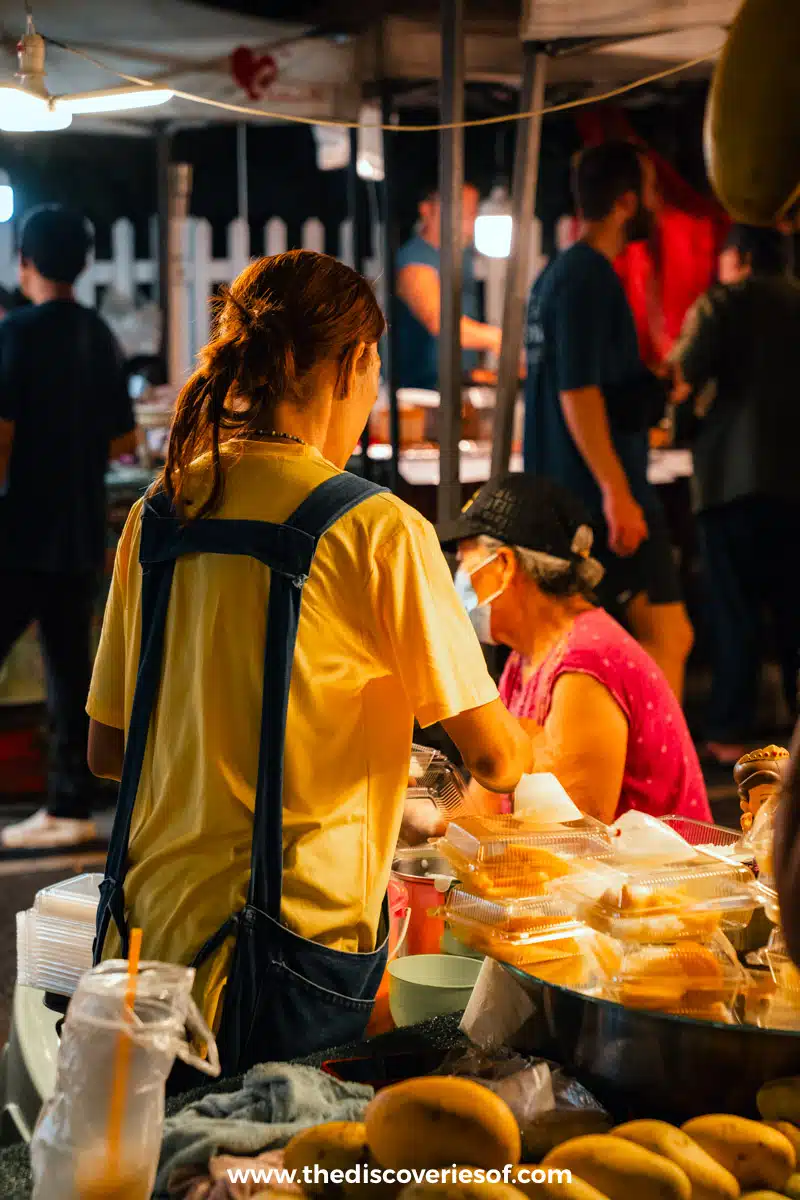
As the sun sets, the streets of the bazaar come to life with the colourful glow of lanterns and neon lights, while the sound of traditional music and the delicious aroma of local street food fills the air. I tasted my way through the food section, sampling spicy sausages, fresh mango sticky rice, and grilled skewers.
Get ready to haggle; the stalls are jam-packed with handmade crafts and cute clothing.
Food + Drink
Visit on an empty stomach and sample as much of the street food as you possibly can.
See Wat Pha Lat – The Hidden Temple
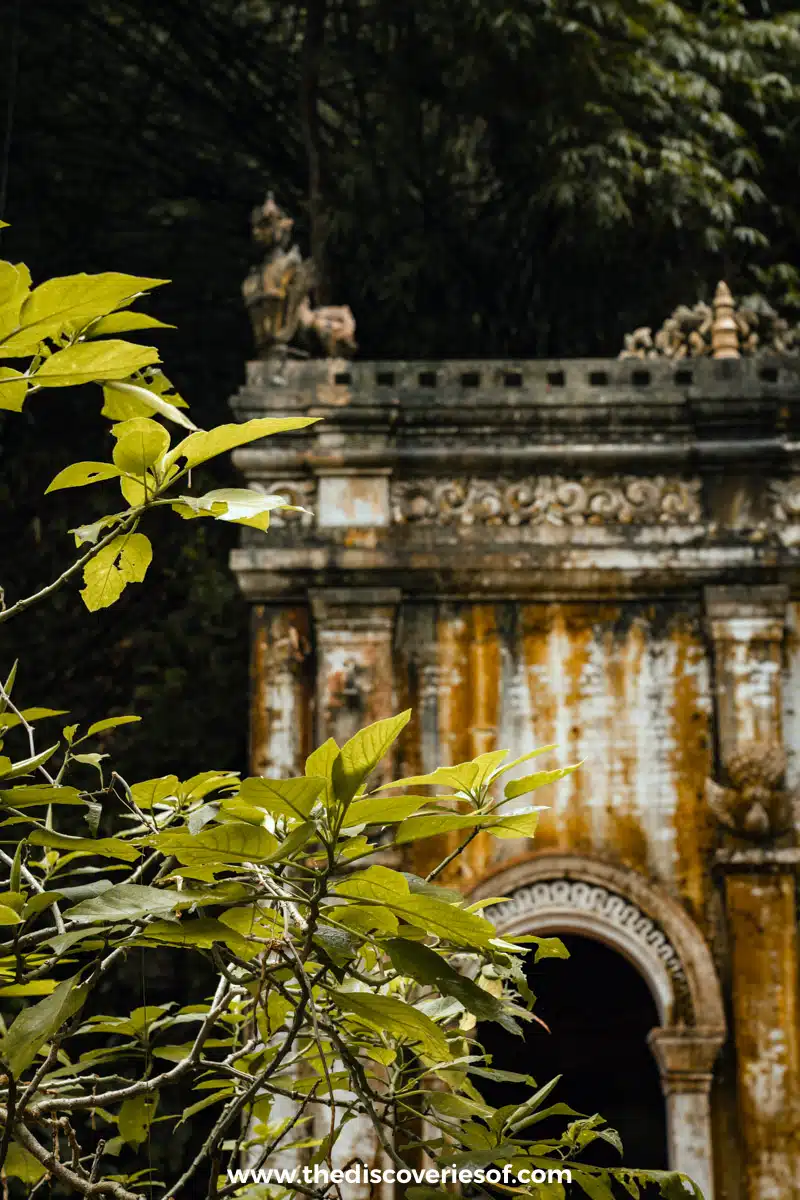
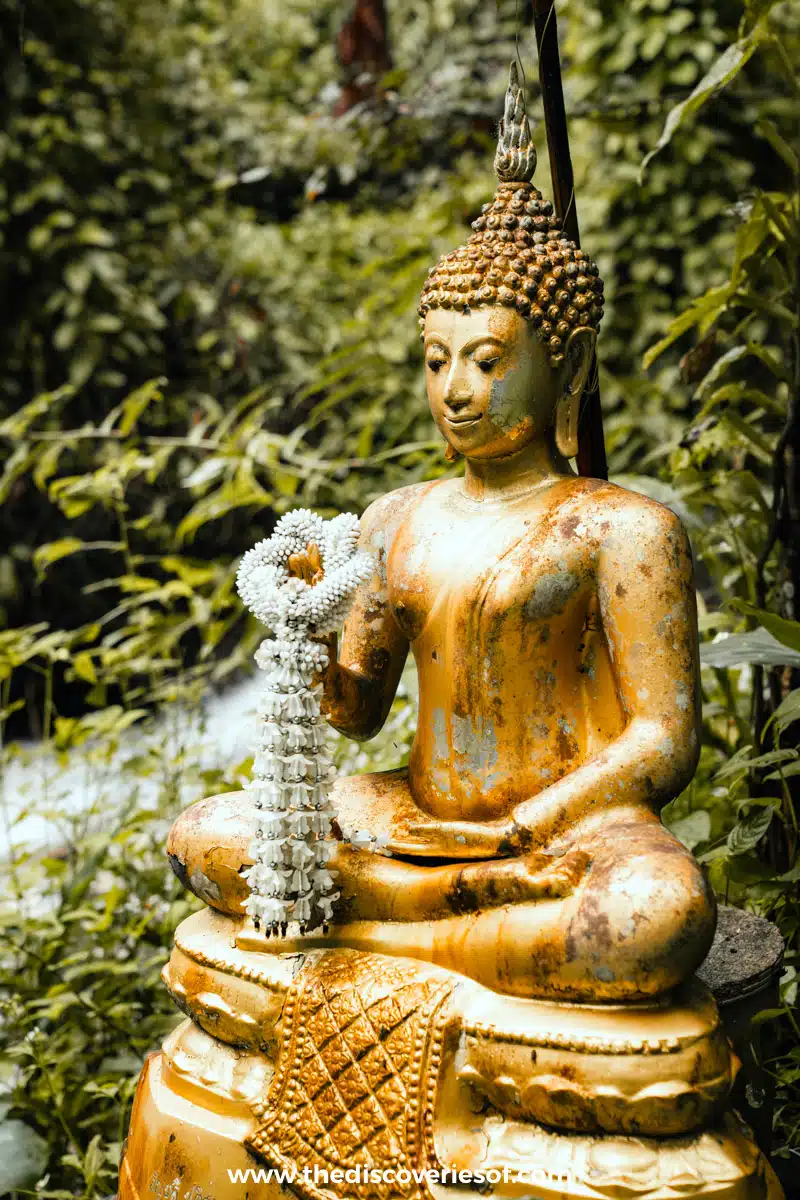
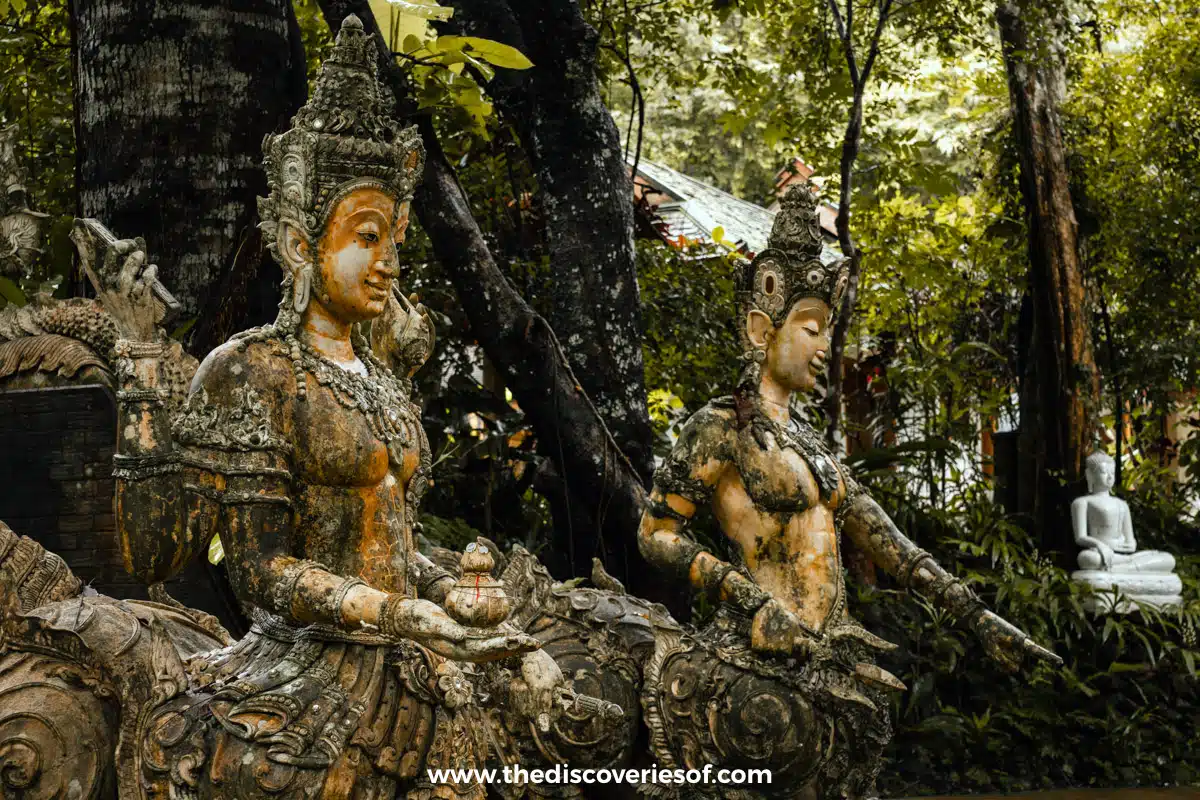
Nestled quietly in the forested foothills of Doi Suthep, Wat Pha Lat is one of Chiang Mai’s most enchanting temples. Known as the “Hidden Temple,” Wat Pha Lat feels mythical – in no small part thanks to a series of crumbling buildings emerging from the jungle and its very own waterfall.
Further down the mountain from Wat Phra Doi Suthep, this lesser-known neighbour is thought to predate Doi Suthep, making it over 630 years old.
That’s not the only difference though – where Doi Suthep is built in Lanna style, Pha Lat showcases the distinct style of Myanmar’s Bagan period – a style characterised by intricate stone carvings and motifs that are less commonly found in Thai temples.
Keep an eye out for the peacocks – Myanmar’s royal symbol – that appear carved into walls and in statues throughout the temple grounds.
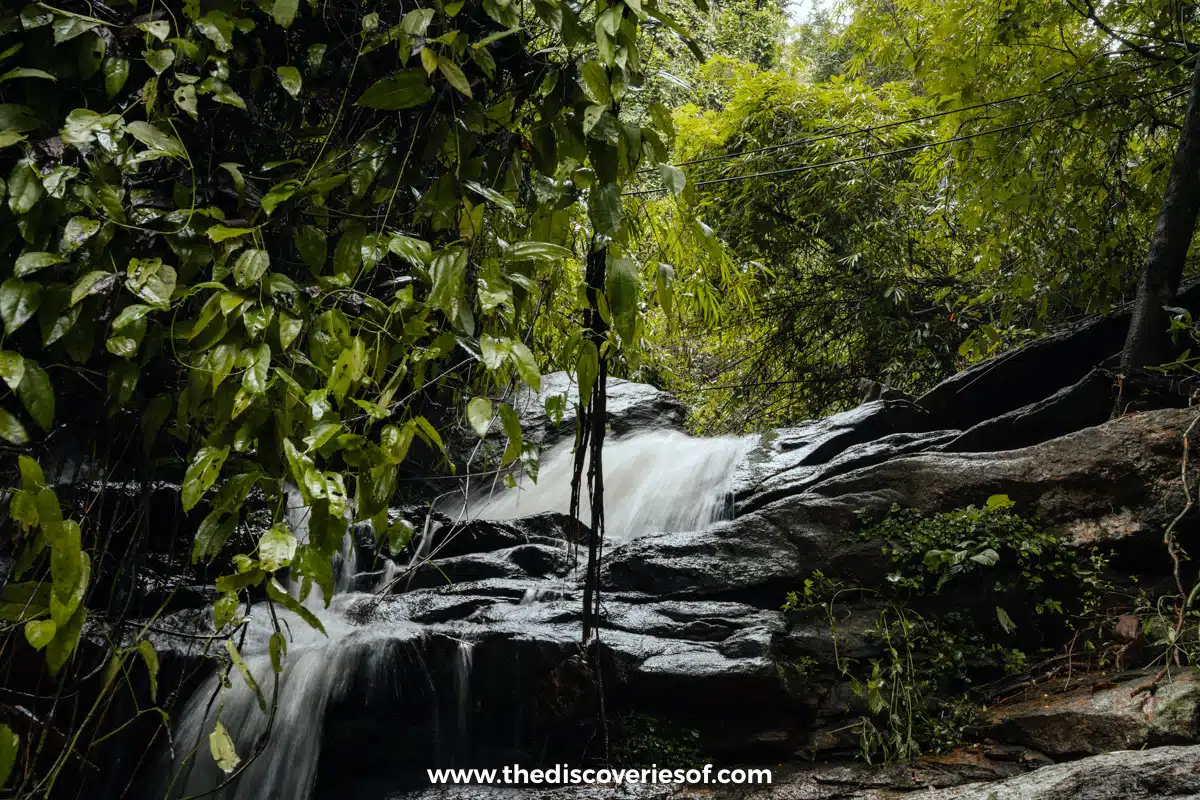
That said, what truly sets Wat Pha Lat apart is its serene location. Hidden amidst dense forest, the temple is immersed in nature. There’s no hustle and bustle here: instead, the calm is punctuated only by birdsong and the gentle flow of water.
Even the temple’s name, “Pha Lat,” even translates to “the sloping cliff,” a nod to its position against a natural rock ledge overlooking Chiang Mai.
Do
Take the “Monk’s Trail” from Chiang Mai to Wat Pha Lat. This short but rewarding hike winds through dense jungle, leading you to the temple just as the monks have for centuries.
Hang Out with the Locals at Huay Kaew Waterfall
Located conveniently close to Chiang Mai’s city limits, Huay Kaew Waterfall is a local favourite and a hidden gem for those craving a quick escape into nature. This small but picturesque waterfall is nestled at the base of Doi Suthep.
Huay Kaew Waterfall is popular for its inviting pools, which are perfect for a quick dip or a cool splash on a warm day. The lower pools are generally accessible and easy to reach, offering shallow, clear water where you can dip your feet or even take a full plunge.
Huay Kaew is also the starting point for a variety of short hiking trails that lead up the mountain, where you can enjoy stunning views over the city and discover secluded forest areas.
Top Tip
One of the trails connects to the Monk’s Trail, which can lead you further up to Wat Pha Lat and eventually to Wat Phra That Doi Suthep.
Spot Wildlife at Elephant Nature Park
Another place on our list of the top things to do in Chiang Mai is a day trip to the Elephant Nature Park.
With over two hundred and fifty acres of gardens, the park is dedicated to providing a sanctuary for dozens of rescued elephants along with buffaloes, cats, dogs, and many other animals.
Visitors can feed the elephants with bananas, cucumbers, and bamboo bark along with going on hikes alongside the gentle giants. While learning about where the elephants came from, you’re invited to bathe and brush the elephants.
In Chiang Mai Elephant Nature Park the animals are treated as equals, there’s no tempting with treats, bullhooks, or elephant rides. This way visitors can enjoy spending time with the elephants, exploring the tropical jungle, and snacking at the cafe whilst the creatures roam the grounds freely.
Stroll Through the Tunnels at Wat Umong
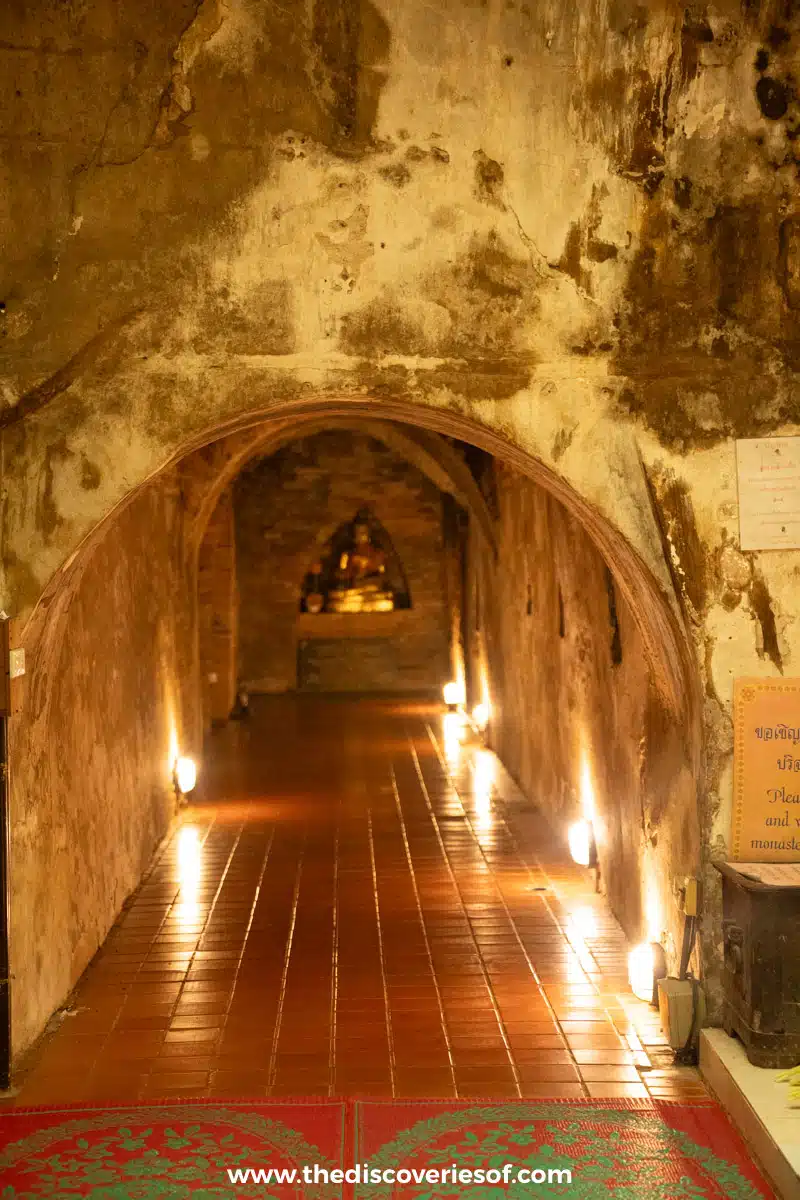
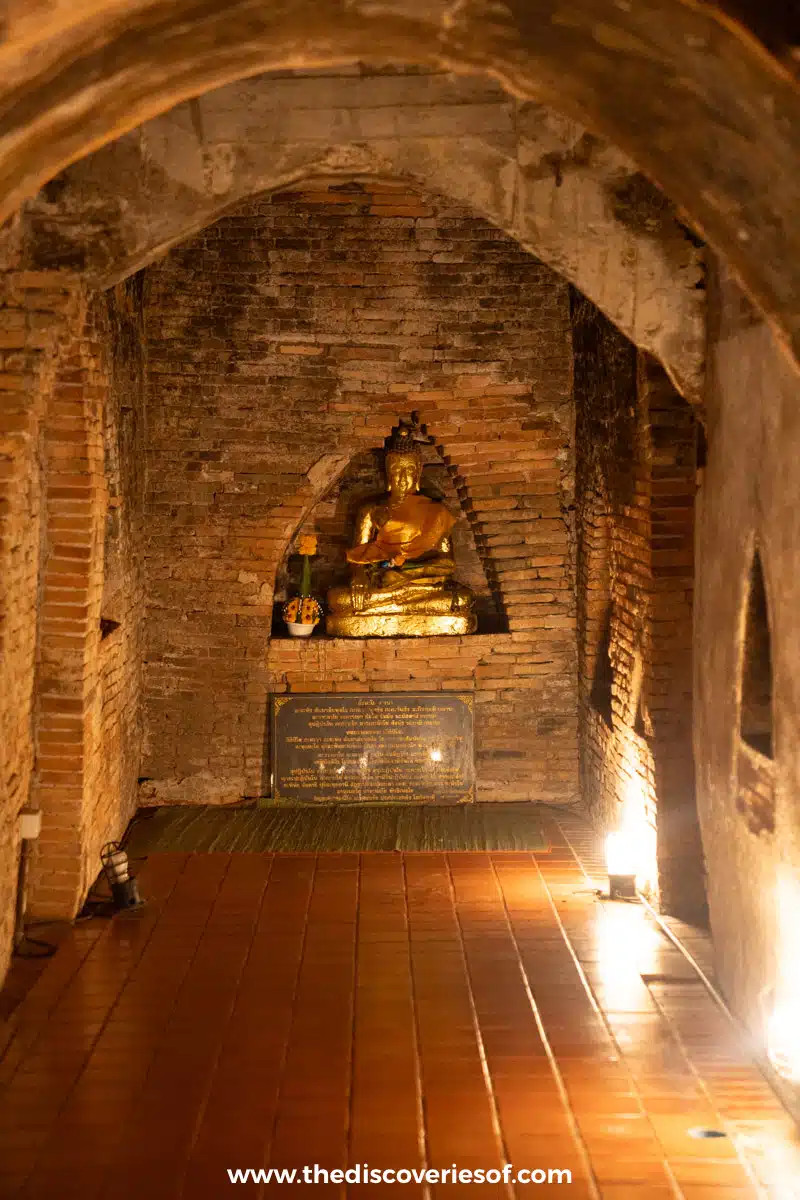
If many of Chiang Mai’s temples are known for their striking stupas and gleaming statues, Wat Umong stands in stark contrast. Known for its centuries-old tunnels, serene meditation centre, and shaded grounds populated by wandering chickens, Wat Umong offers a fascinating blend of history, spirituality, and nature.
Built in the 13th century during the reign of King Mangrai, this temple complex has served as a place of meditation, study, and solitude for generations of monks.
The name “Wat Umong” translates to “Tunnel Temple,” a reference to the unique labyrinth of tunnels constructed by King Kuena, the sixth king of the Mangrai Dynasty. Originally intended to create a quiet, secluded space for monks who focused on deep meditation, they are punctuated with small alcoves housing Buddha statues and age-old murals.
Top Tip
Keep an eye out for the small population of bats dozing in small crevices in the ceiling.
Eat, Drink and Shop on Nimmanhaemin Road
Wondering where all the cool kids hang out in Chiang Mai? Nimmanhaemin Road is a vibrant and bustling street situated in the heart of the city – the street is lined with trendy cafes, bars, boutique shops and restaurants.
Some top places to eat and drink here include Rustic & Blue – swing by here for a killer brunch – and The Beer Lab, where you should start your evening in Chiang Mai. In terms of shopping, there are plenty of places to pick up indie souvenirs and hand-made jewellery.
Head Out of the City to Wat Phra That Doi Saket
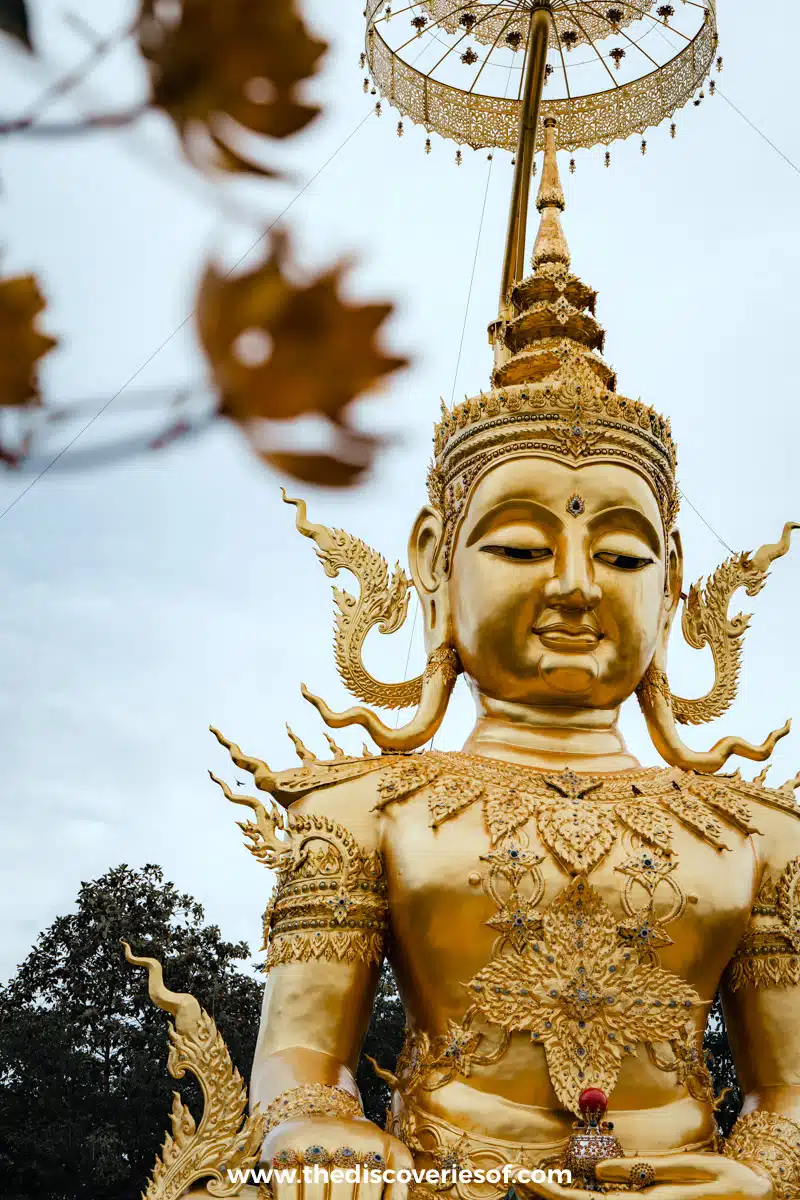
Want a more off-the-beaten-path temple experience near Chiang Mai? Wat Phra That Doi Saket offers a serene alternative to the busier sites.
Located on a gentle hill overlooking the charming Doi Saket district, this temple combines spiritual tranquillity with artistic details and some of the most captivating views over the surrounding countryside.
The temple walls are teeming with vibrant murals created by prominent Thai artists and the chedi – thought to date back to the 14th century, showcases the traditional Lanna-style golden spires.
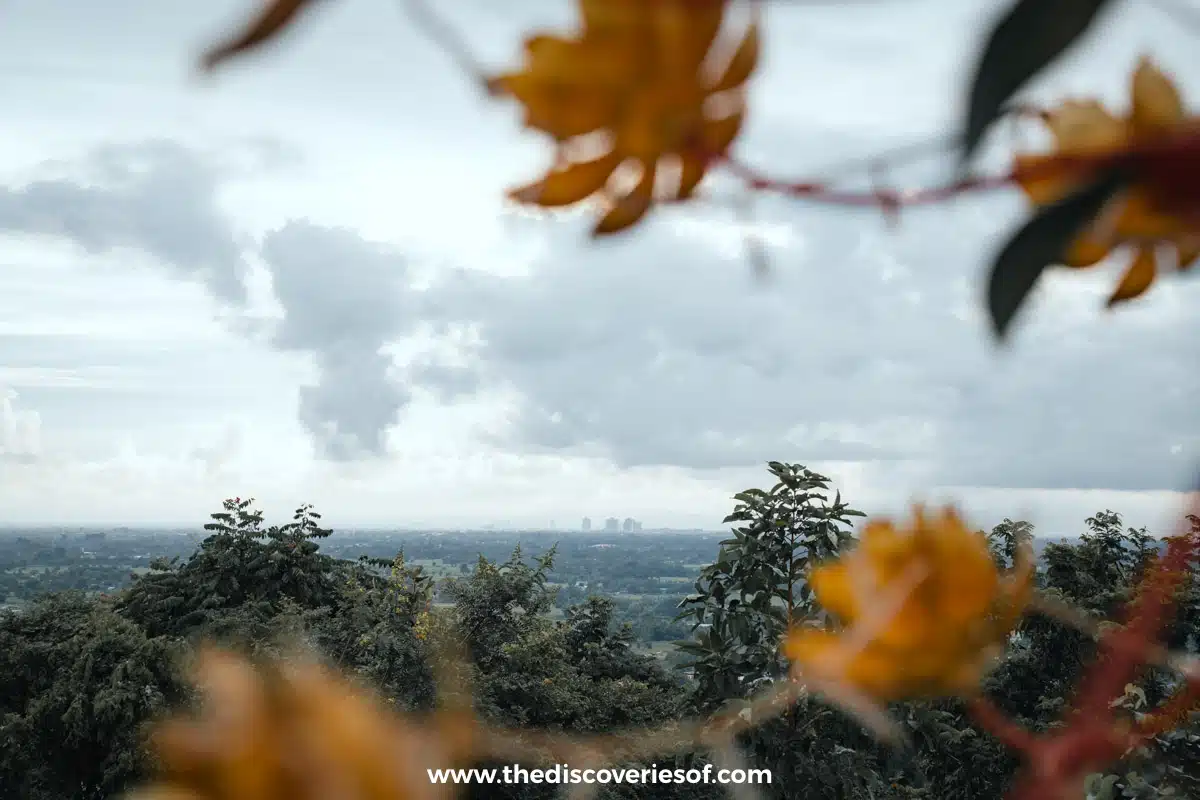
Now, I won’t lie – the temple is beautiful, but no small part of Doi Saket’s draw is the incredible views you get over the lush Doi Saket Valley. Grab an eyeful of the patchwork of rice fields, farms and hilltops with the city peeking out from the distance.
Top Tip
This is an ideal spot for those looking to explore a quieter temple with gorgeous views of the countryside.
Walk in the Footsteps of Royals at Bhubing Palace
Nestled in the Doi Suthep mountains sits the royal home of various kings, queens, and their families for winter visits to Chiang Mai. Bhubing Palace was built in 1961 and is now a popular spot with tourists.
Overlooking the city, Bhubing Palace is one of the top things to do in Chiang Mai for its ‘ruean mu’ architectural style exterior and famous rose gardens.
The grounds are decorated with well-groomed gardens, elegant fountains, and a teak wood pavilion that can be explored on foot or by renting a golf cart. Alongside the Bhubing Palace structure, there are several guesthouses and log cabins often used by prominent state visitors.
Uncover History and Royal Legacy at Wat Suan Dok
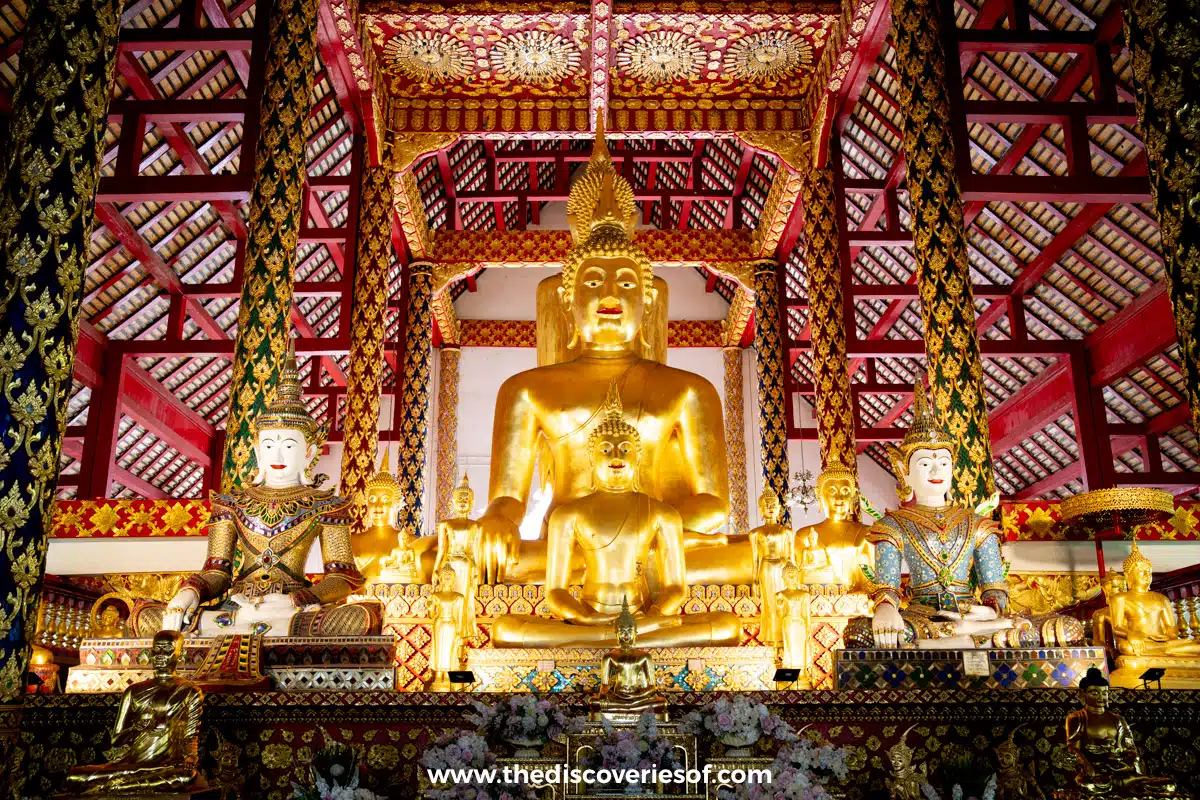
A striking blend of history, spirituality, and royal heritage, Wat Suan Dok is one of Chiang Mai’s most fascinating temples.
Originally built in the 14th century as a sanctuary for a revered Buddhist relic, Wat Suan Dok holds not only religious significance but also serves as a resting place for members of Chiang Mai’s last royal family. Set just outside the Old City, this temple is a peaceful site that tells the story of Chiang Mai and its transformation through the centuries.
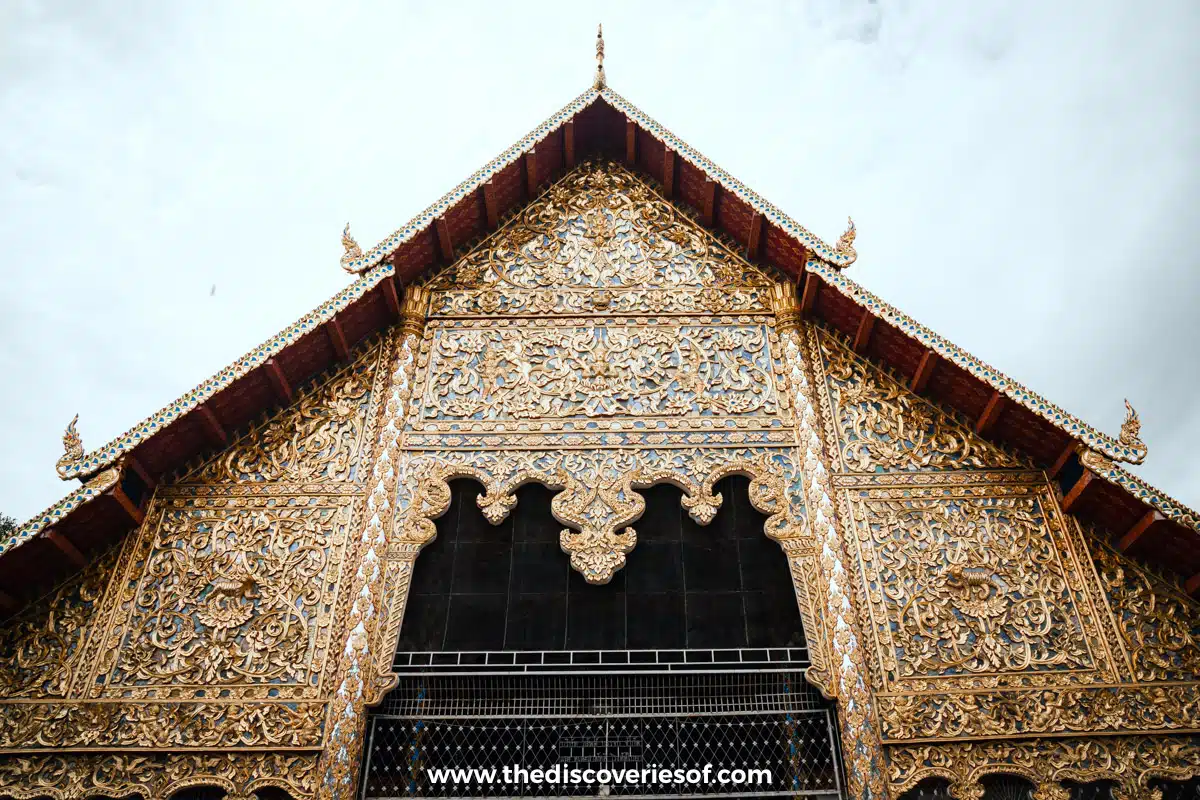
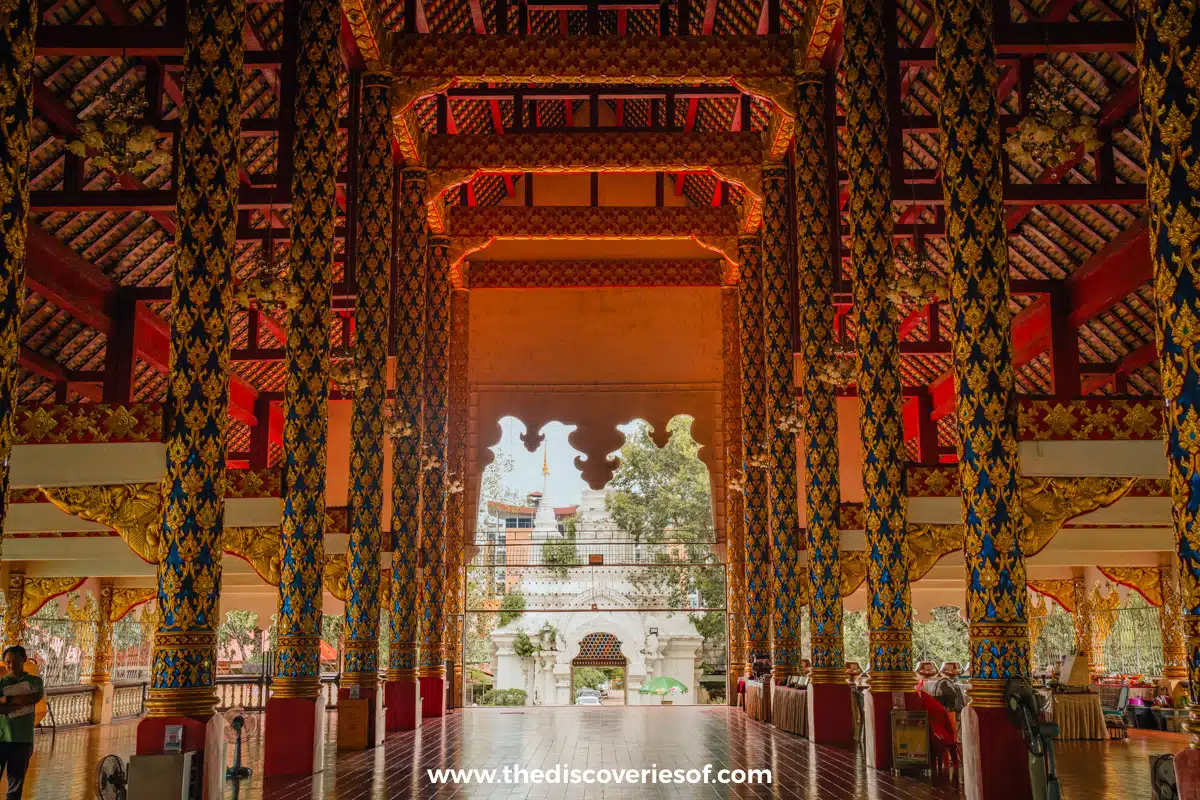
The heart of Wat Suan Dok lies in its golden chedi (pagoda), which enshrines a sacred relic of the Buddha.
According to legend, a monk from Sukhothai brought this relic to Chiang Mai, and it miraculously split in two. One part of the relic was placed in Wat Suan Dok’s main pagoda, while the other was carried by a sacred white elephant that ultimately led to the founding of Wat Phra That Doi Suthep.
This connection gives Wat Suan Dok a unique link to one of Thailand’s most revered pilgrimage sites, and many visitors come here to pay their respects.
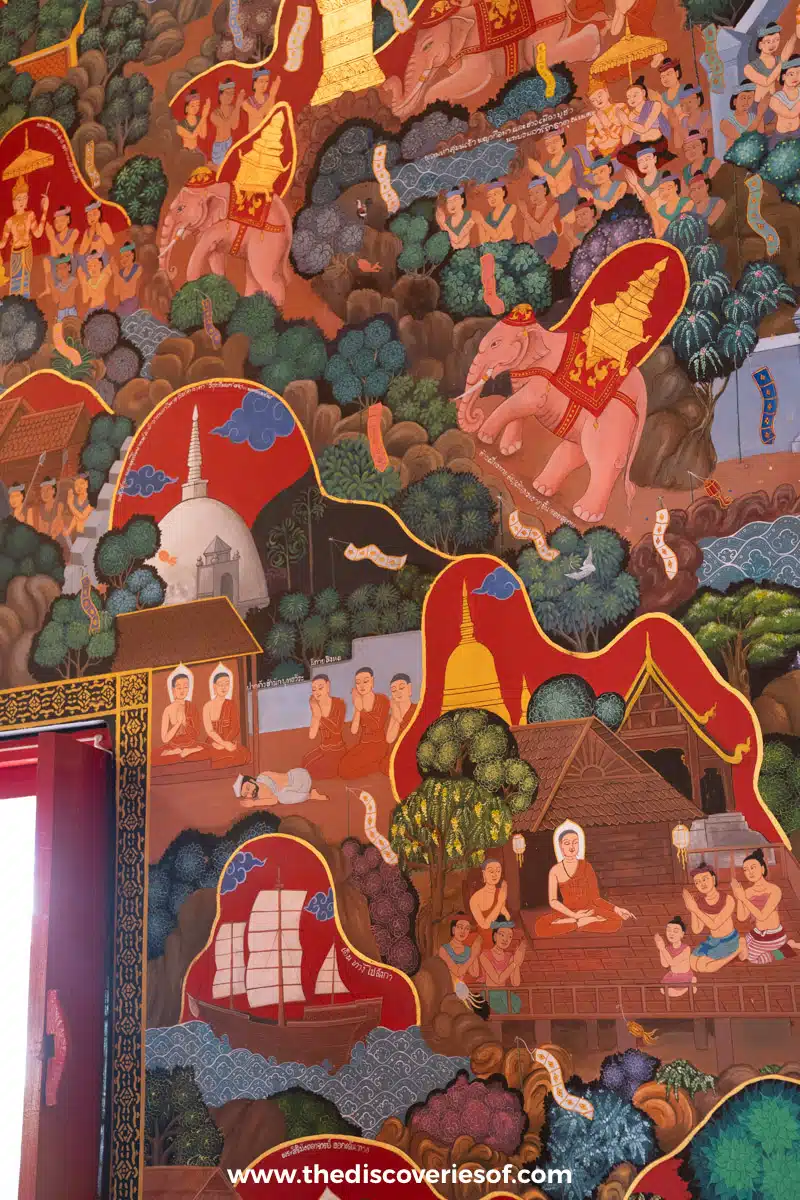
Be sure to explore the smaller temples within the complex, especially the university’s chapel adorned with intricate murals. These murals vividly illustrate scenes from Chiang Mai’s past, portraying life in the ancient Lanna Kingdom and key events that shaped the region.
Do
Don’t miss the collection of white chedis In front of the temple’s main complex. These are the tombs of Chiang Mai’s last royal family. This resting place commemorates members of Chiang Mai’s distinct royal lineage (which is separate from Thailand’s monarchy in Bangkok).
Wander Through Royal Park Rajapruek
The Royal Park Rajapruek is a popular attraction in the city of Chiang Mai. Built as a commemoration for King Bhumibol Adulyadej’s sixty years on the throne, along with the king’s eightieth birthday, the park offers beautiful landscaped gardens, a diverse range of flora and fauna, and tram rides.
The Royal Park Rajapruek is divided into different sections each showcasing unique themes; there’s a tropical garden displaying desert plants, herbs, and Thai tropical plants, an international garden zone with contributors from thirty three nations, and a lotus garden among many others.
The Gardens for the King is a section playing tribute to His Majesty with the Thai government and private sectors creating their own garden designs.
Reflect at Tha Phae Gate (And Visit the Remaining Gates)
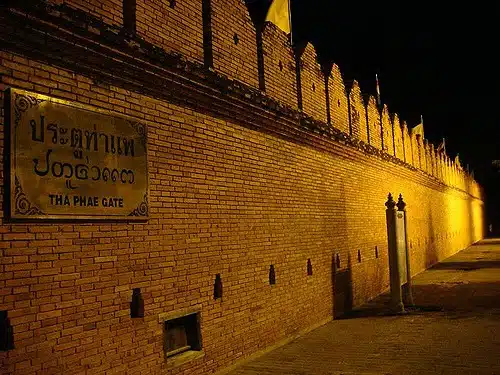
Dating back to ancient times, the Tha Phae Gate acts as the east entrance to the old city within Chiang Mai.
While the gate was originally designed to protect Chiang Mai from a Burmese invasion, the tall, rectangular walls are now the site of many festivals including the Chiang Mai Flower Festival.
At the time of the flower festival each February the Tha Phae Gate acts as the centre of floral exhibits and beauty contests while colourful floats graze past the sand coloured bricks.
The Tha Phae Gate is a must see attraction in Chiang Mai for its historical value; as part of the eight gates of the old city, the Tha Phae Gate signifies prosperity and was once the access point for monks and traders.
With markets, shops, restaurants, and cafes surrounding the towering walls, the Tha Phae Gate is always thriving with noise, crowds, and colours.
Explore The Tribal Museum
Besides the many temples, forests, and falls of Chiang Mai, there are also museums and galleries worth adding to your checklist of things to do in the city.
With exhibits dedicated to the history and culture of Thailand’s tribes, The Tribal Museum is my favourite museum in Chiang Mai. Alongside the museum’s collection of tribal clothes, artefacts, and tribal huts, there’s also a monthly tribal market offering authentic, handmade crafts from the hill tribes in northern Thailand.
In Chiang Mai you’ll also find the Chiang Mai National museum (home to displays of Thai art), the Lanna Folklife Museum, and the Art in Paradise – notable for its impressive 3D murals that visitors can snap pictures of or interact with. There’s even an app that can bring the paintings to life!
Stroll Around Warorot Market
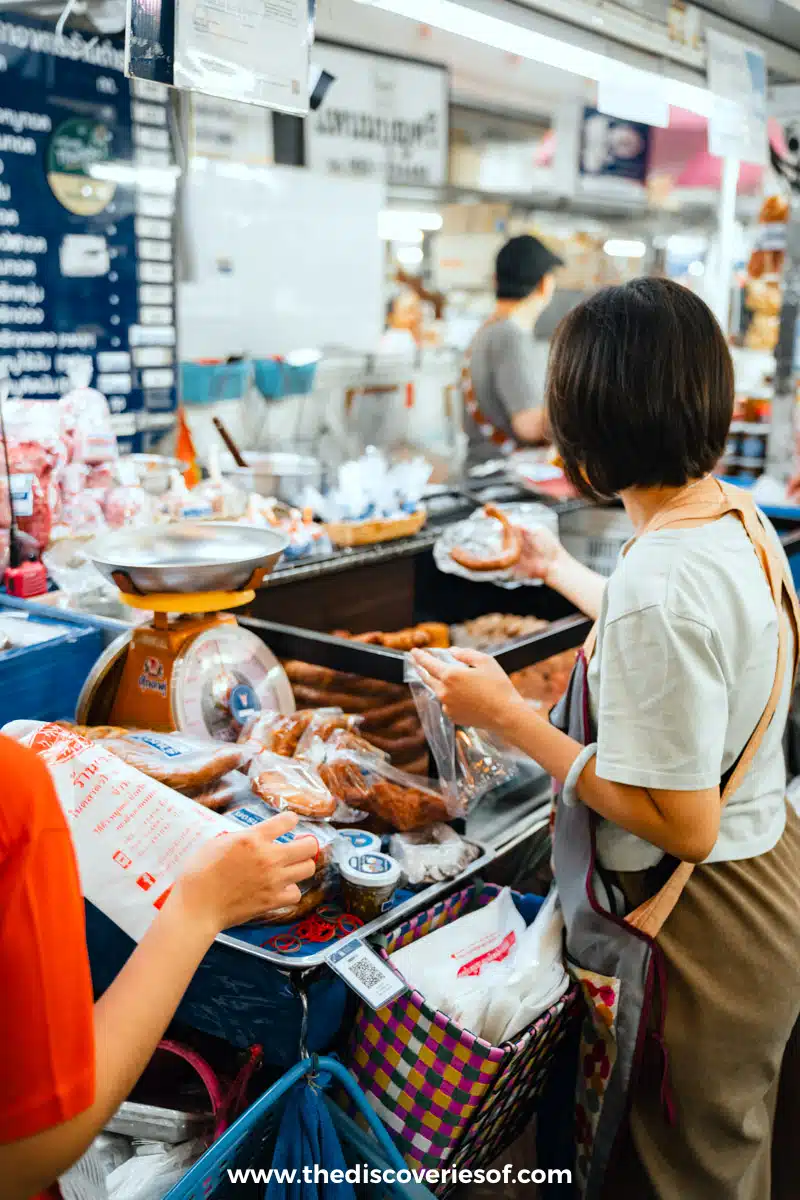
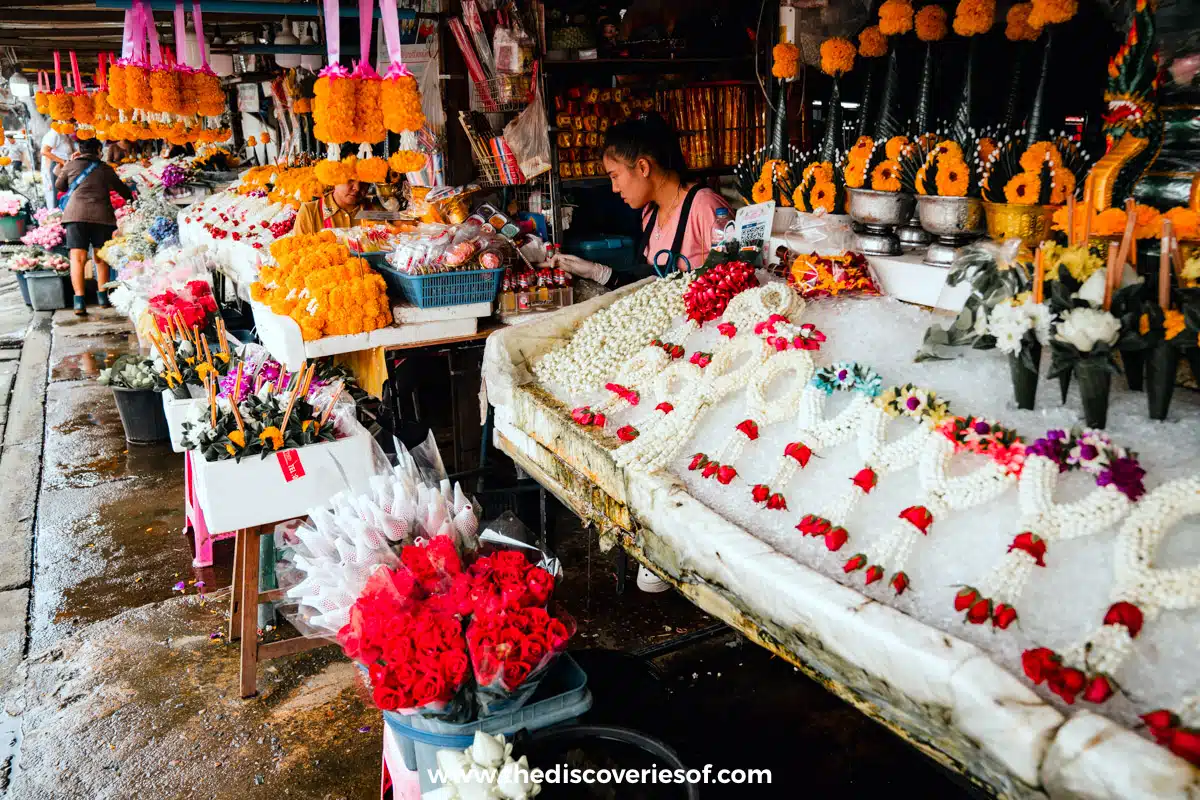
Positioned along Ping River, Warorot Market is one of the best places to shop in the city for anything from fresh produce to beauty products.
Striped market stalls stretch out in almost every direction offering dried fruit, herbs, clothing, jewellery, and sunglasses. Warorot Market also divides into smaller sections including a Flower Market and Tribal Market.
Many Thai locals shop at Warorot Market for the inexpensive prices and assortment of goods. Want to try somewhere different? The Umbrella Village in Chiang Mai is a glimpse into a lesser-known part of the city.
Visit the Queen Sirikit Botanical Garden
Fancy delving into the Thai rainforest? Chiang Mai is blessed with an incredibly lush landscape, and one place where you can really admire this is the Queen Sirikit Botanical Garden – a 560-acre oasis.
The garden is dedicated to the study and conservation of plants and is home to over 700 species, many of which are rare and endangered. It’s set out over several themed zones, including a Thai Orchid Nursery, a Fern Zone and a Succulent Plant Zone.
Top Tip: One of the highlights of the garden is the Rainforest Zone, which covers over 100 acres and boasts an impressive waterfall and a suspension bridge that offers stunning views of the surrounding area.
My most recent visit to Chiang Mai was part of a campaign with Fan Club Thailand @fanclubthailand – as ever, all thoughts and opinions are my own – hands off! #amazingthailand
Read More Thailand Guides
- Thailand Travel Guide: What to See and Insider Travel Tips
- What to Pack for Thailand: A Handy Thailand Packing List
- Railay Travel Guide: Discover This Gorgeous Corner of Thailand
- The Best Things to do in Phuket: 16 Incredible Attractions You Need to Visit
Love this? Save and share on Pinterest!
